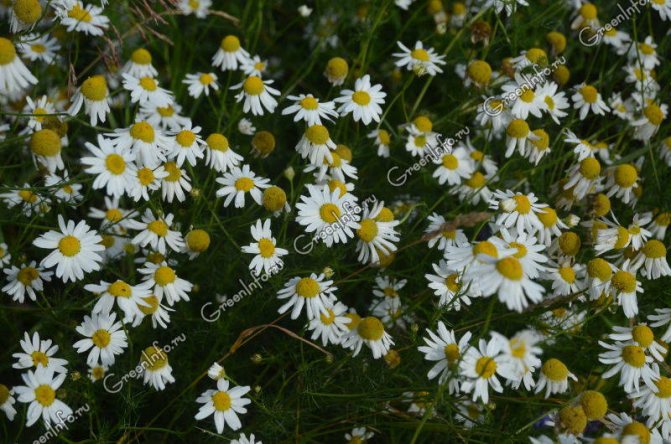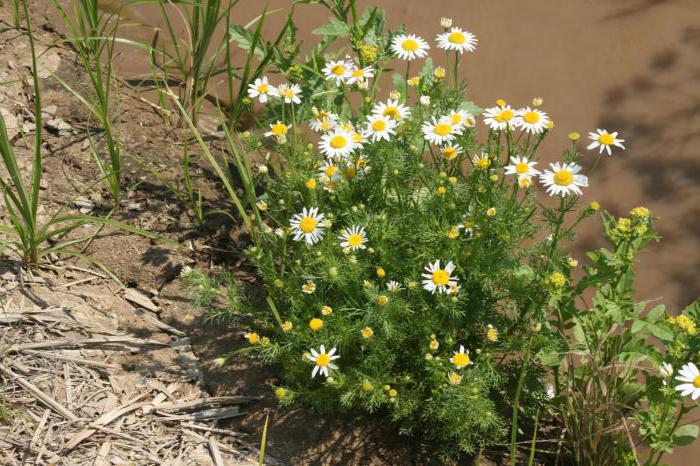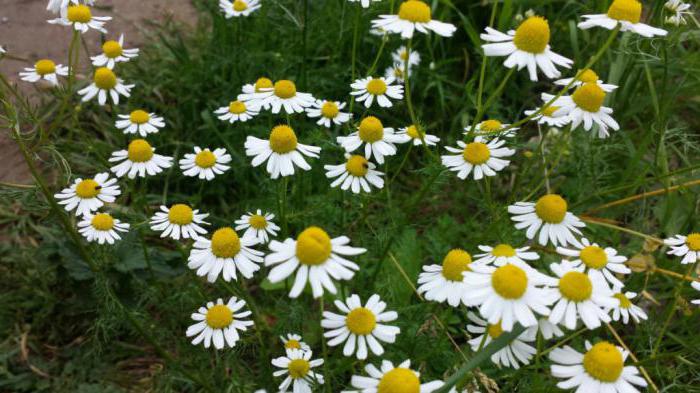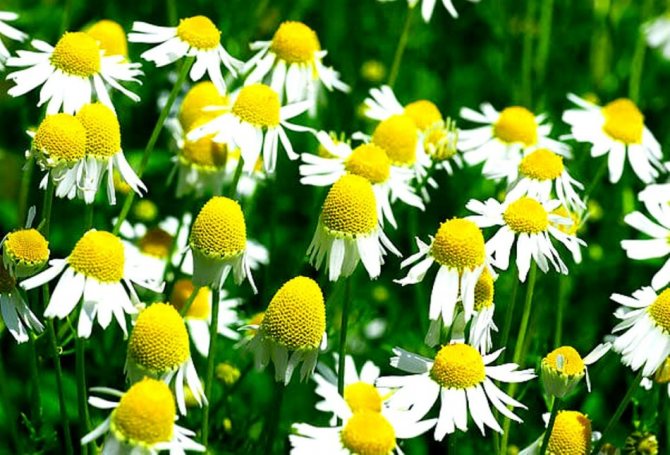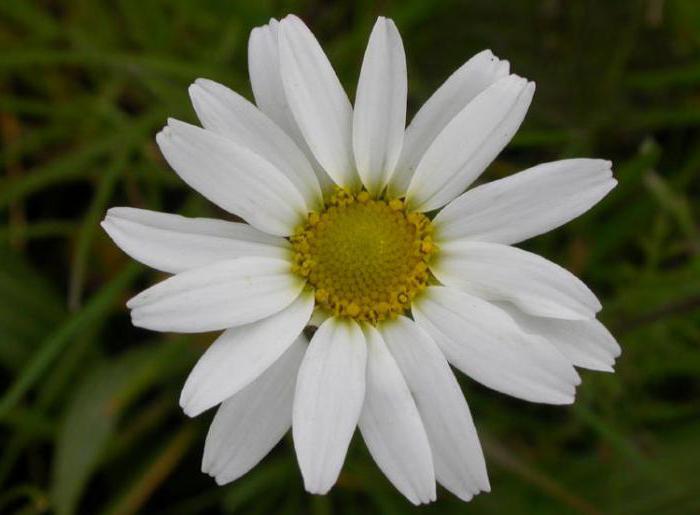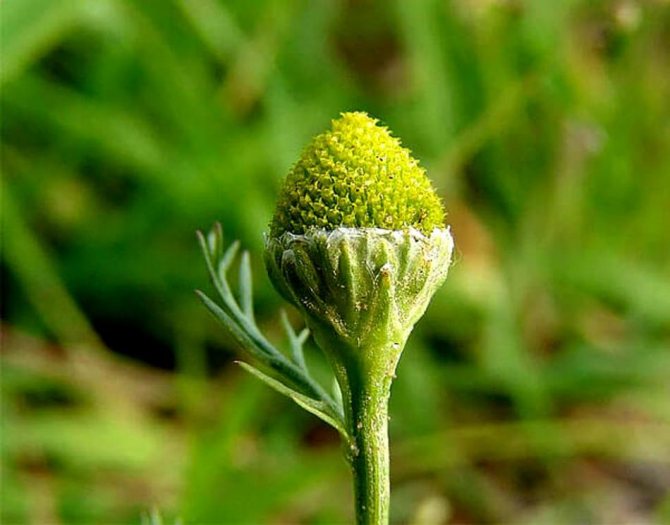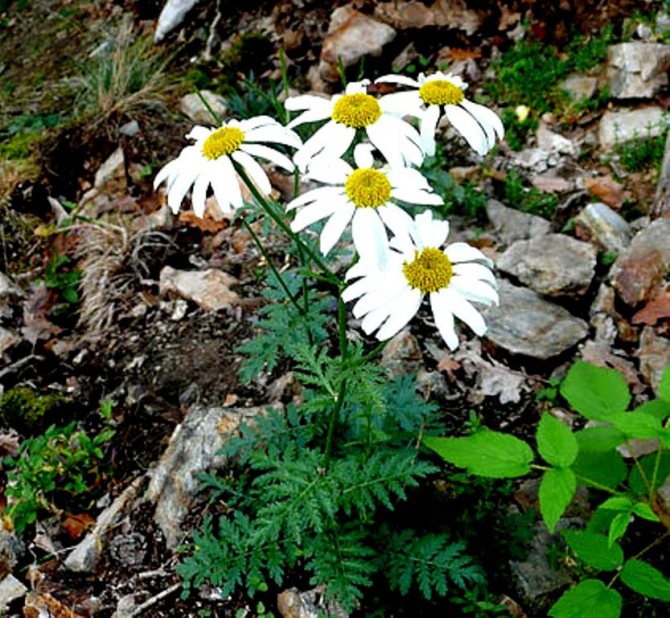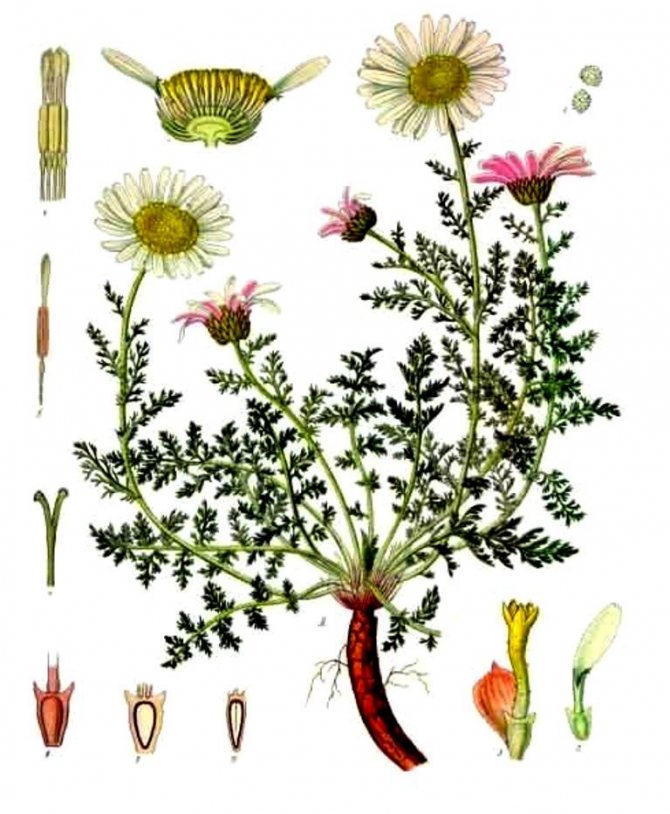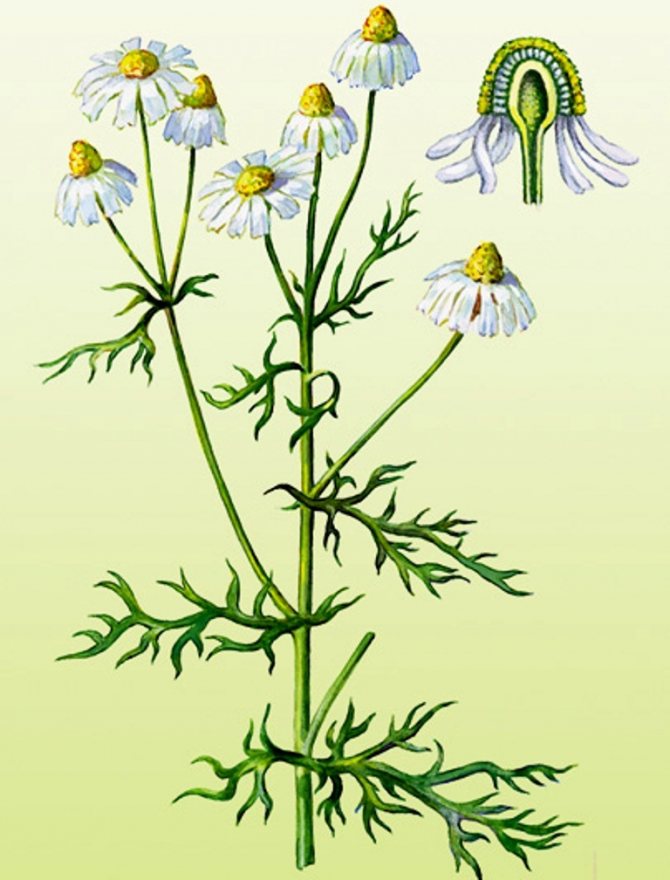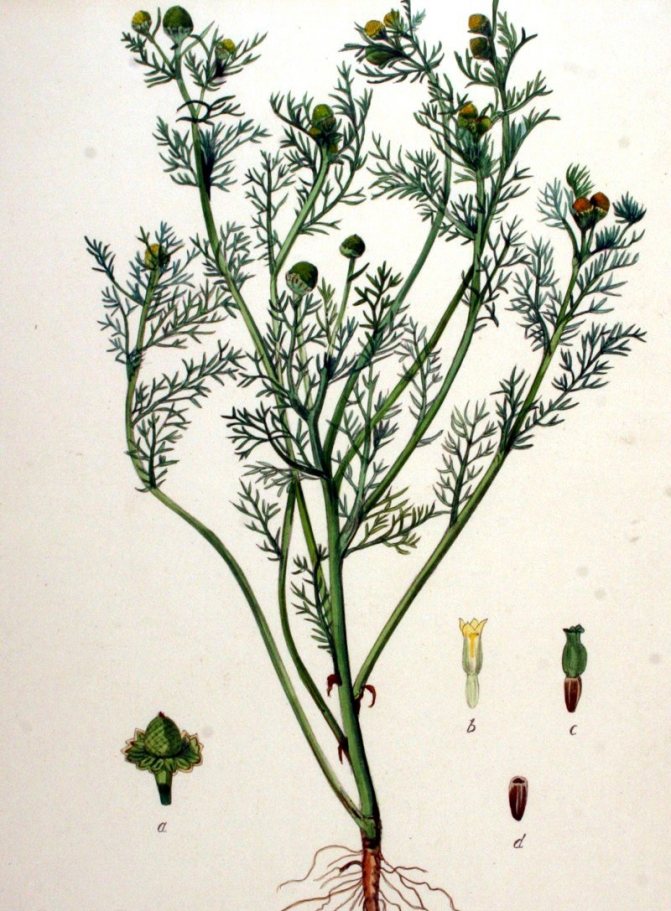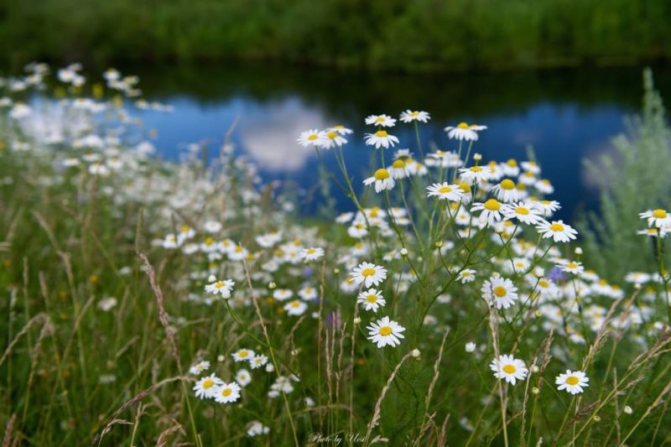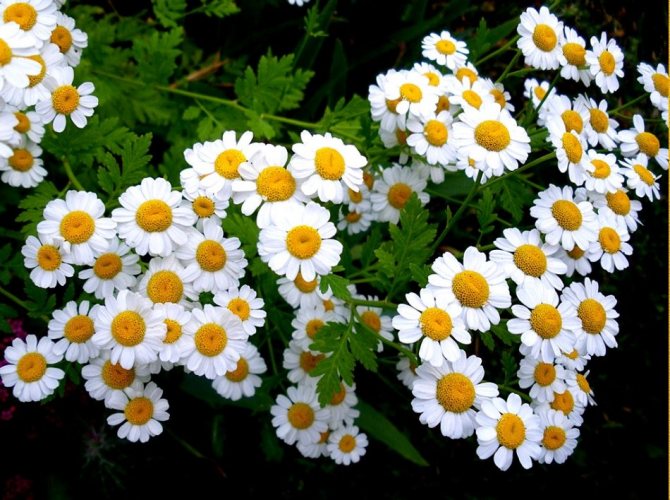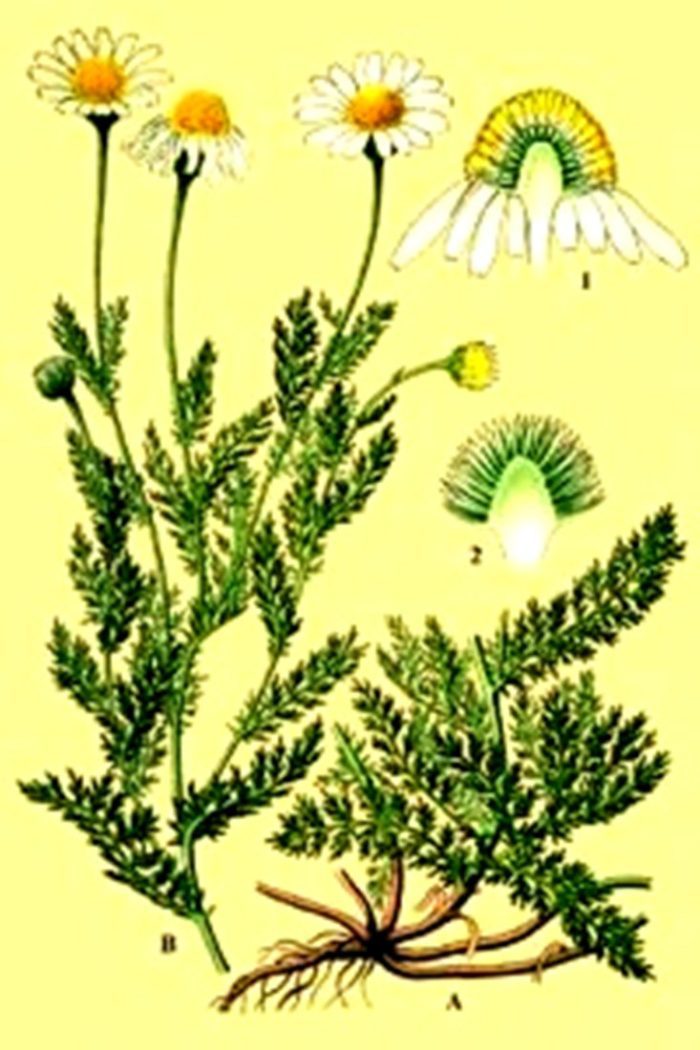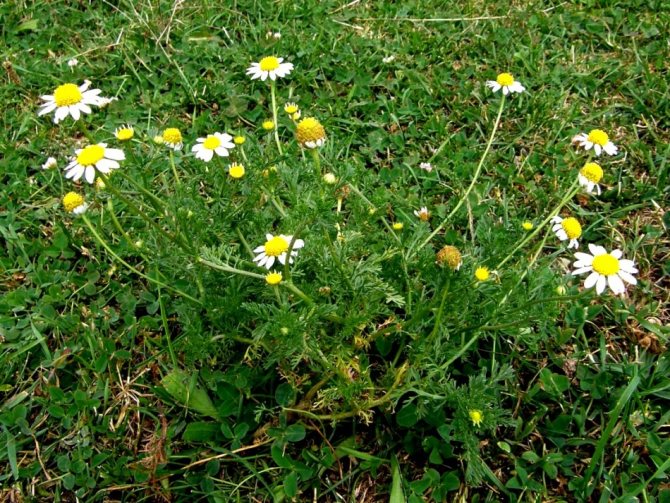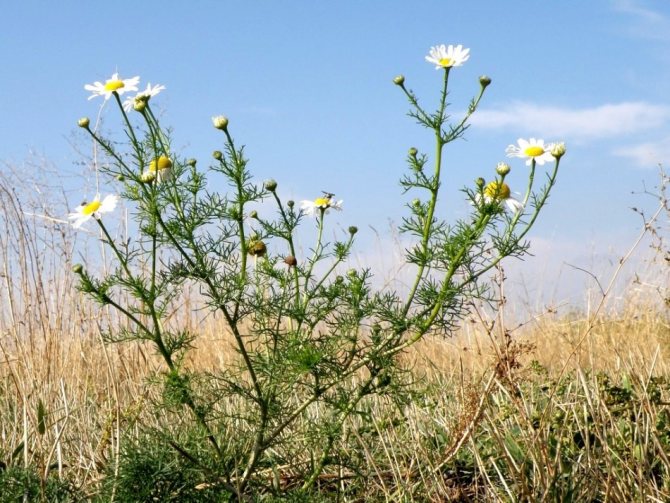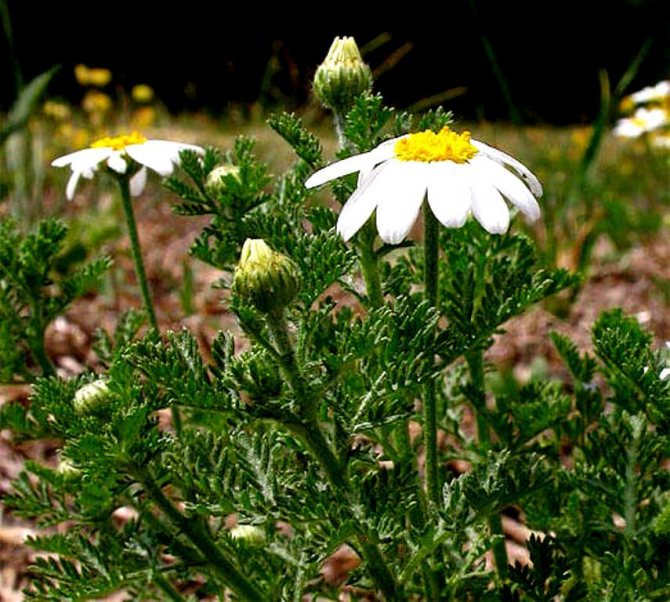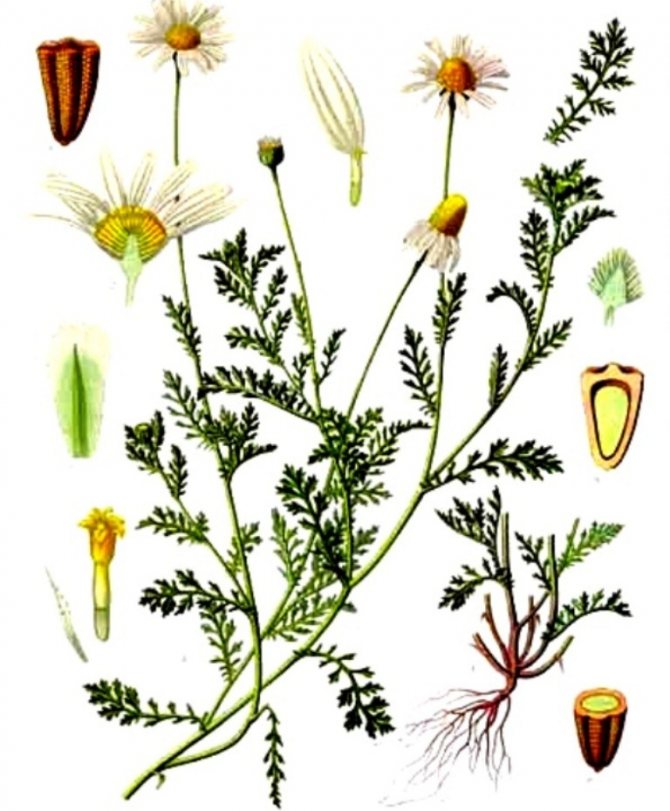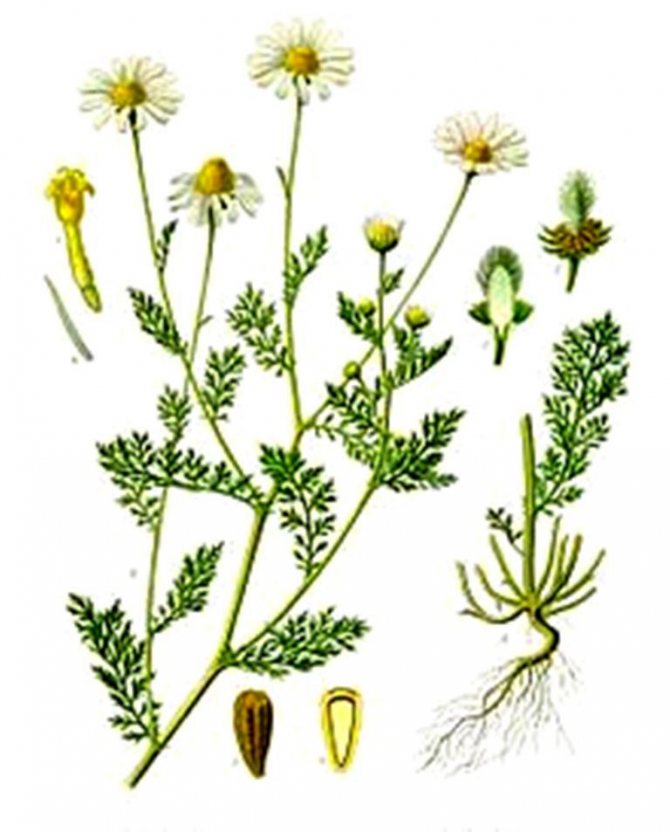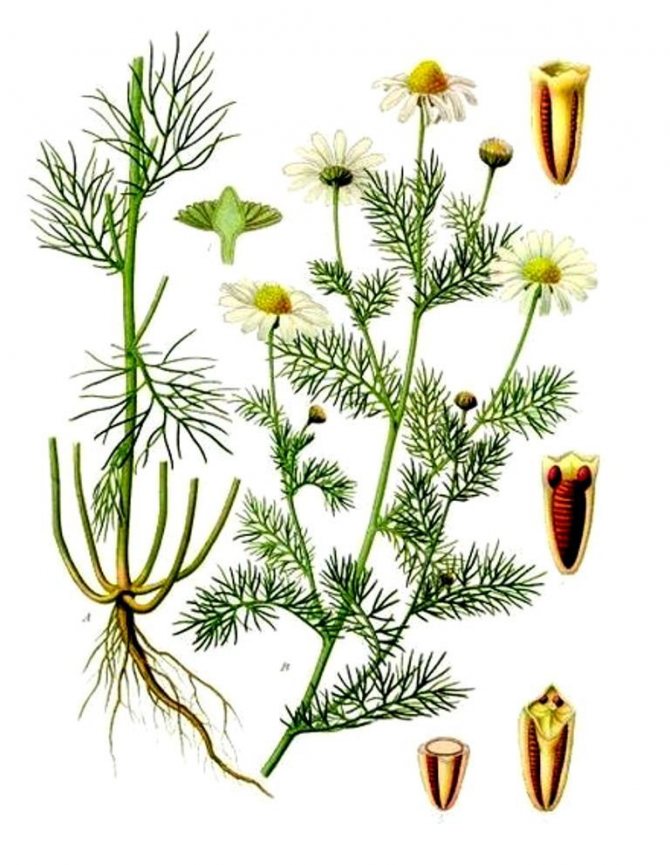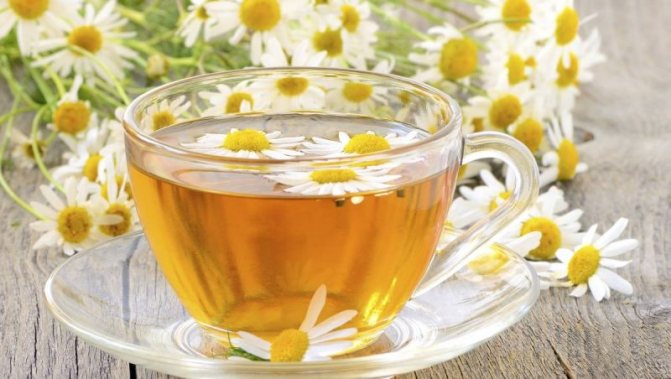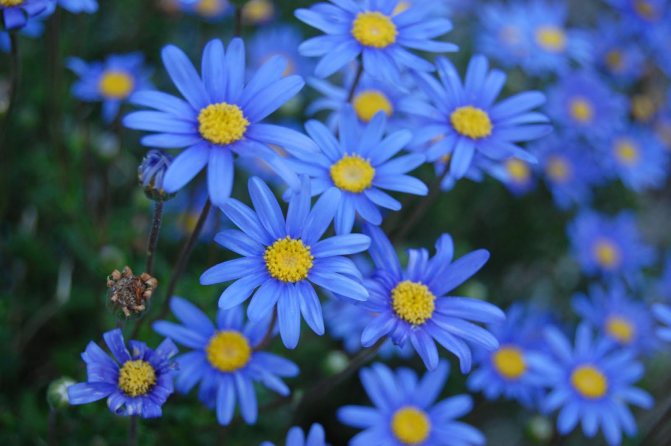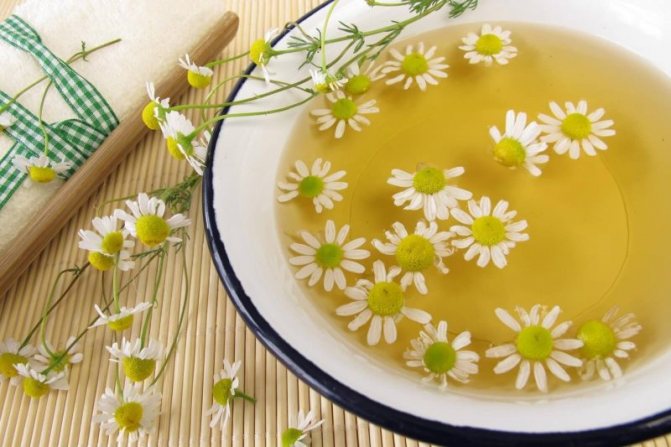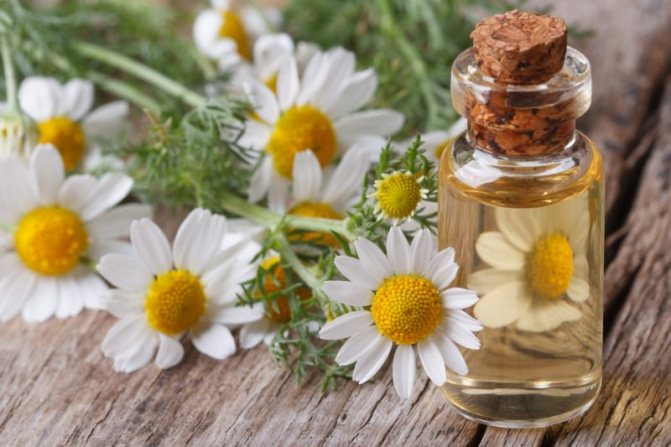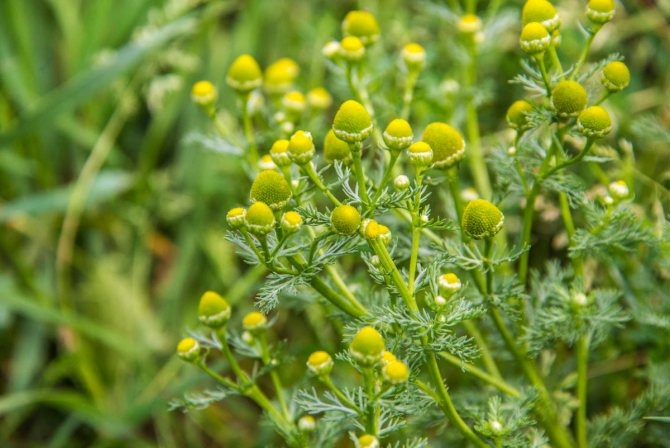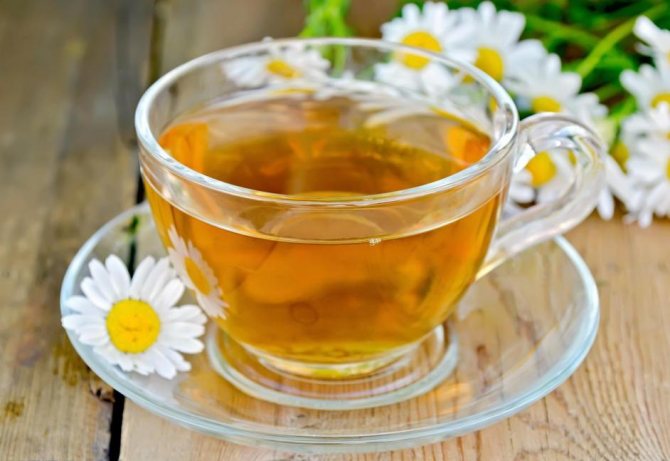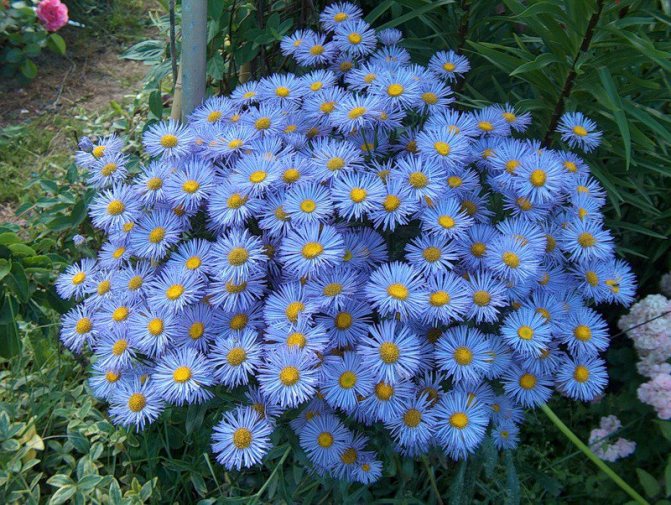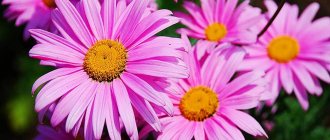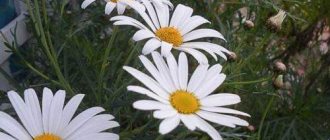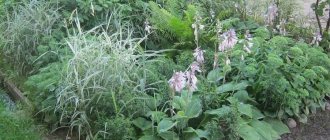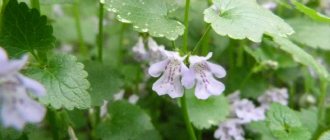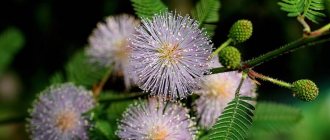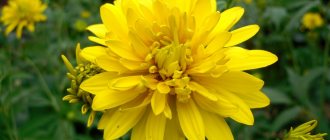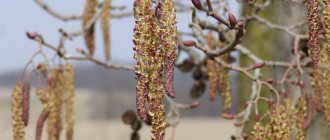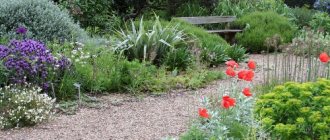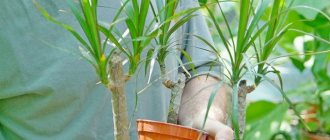The question of where chamomile grows seems very simple to many. A symbol of purity and fidelity, these small white flowers can be seen everywhere in the summer. Very often, the plant is mistaken for a weed and without any remorse is weeded out on the site along with other similar plants.
The fact is that chamomile seeds are very small, the wind is able to carry them over long distances. Germinating, they can create a dense carpet of white flowers with a yellow center, but this culture also occurs in the form of individual small bushes that live in various places.
The ubiquity of chamomile greatly reduces its value in the eyes of gardeners, many of whom prefer to destroy random shoots of this flower along with weeds. Nevertheless, the medicinal properties of the plant make it to be cultivated as a source of raw materials for the pharmaceutical and cosmetic industries. In various countries, common chamomile is specially grown along with the most important agricultural crops.
What is this plant?
The name "chamomile" is a collective name. It is understood as various related plant species belonging to the Aster family. They all have a similar external shape of inflorescences and bush.
The most famous species in alternative medicine is chamomile. But many other plants can be attributed to the same genus. This is a fragrant chamomile, circumpolar, rocky, Sevan. There is also a field, dog, Russian, Roman, etc.
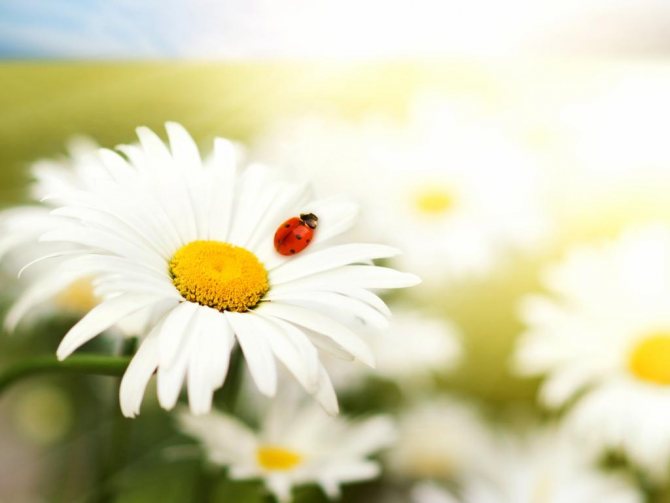
Nevertheless, when it comes to medicine, this flower means chamomile. It is the most popular, well-known and well-studied species of this plant. Roman chamomile and tongueless chamomile are used to get rid of some ailments. However, this happens much less often.
One of the most popular medicinal plants is still pharmaceutical chamomile. This is due to the presence of a wide range of medicinal properties in her, which make it possible to use this species for various diseases, ranging from infectious ailments and ending with pathologies of the nervous system. Of course, the healing properties of chamomile alone do not allow a person to finally return to health. However, they significantly weaken the symptoms of the disease and alleviate the patient's condition. That is why the beneficial properties of chamomile (and in some cases its other types) are used as an adjunct to the treatment of various pathologies.
Plant distribution area
It is quite easy to distinguish between different specimens of a useful flower. Chamomile, also called common or medicinal, is a small annual plant with small white flowers. The stem height reaches only 40 cm, while the garden counterpart grows up to 1 m.
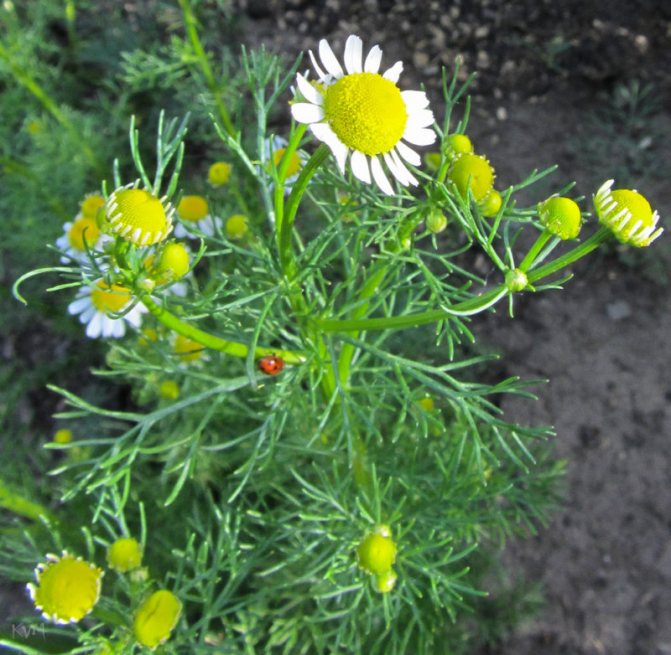

The shoots of this wild culture are thin. The leaves resemble dill sprigs. The petals are white and oblong. The middle of the flower is bright yellow, slightly convex.
This plant reproduces by seeds, which are very easily detached from the bud after ripening. This feature is the main reason for the widespread distribution of the flower. The seeds are quickly carried by the wind, fall into the soil and take root quite well.Unpretentiousness is the second reason that chamomile can be found almost anywhere in the world.
The medicinal culture is doing well in a temperate climate. Therefore, most often it can be found in Eastern and Western Europe. Chamomile is widespread in North America. It does not grow only in the northern states, where the climatic conditions are rather harsh.
In Asia, you can also find whole fields of this flower. In a number of countries, it is grown on an industrial scale, providing a valuable raw material for the pharmaceutical industry. Even in Africa, despite the arid climate, you can find the common chamomile, which stands out especially against the background of the amazing tropical landscape.
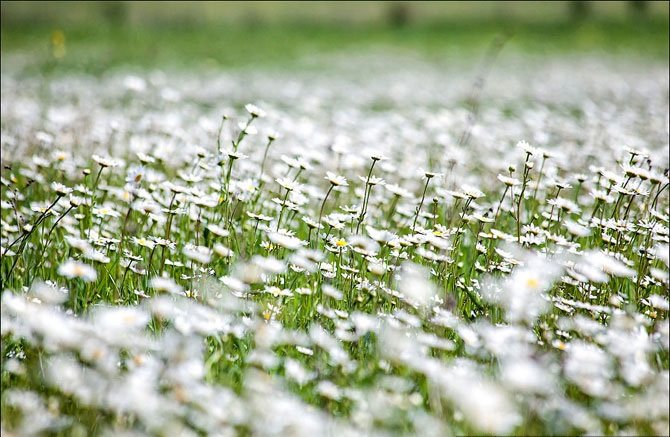

Medicinal raw materials
The healing properties of chamomile herb were actively used in their recipes by ancient scientists. So, Hippocrates and Dioscorides used this plant to relieve cramps and pain. Pliny the elder recommended using all parts of chamomile as an antidote for snakebites, and the broth as an effective diuretic. Avicenna also pointed to this plant. He used the healing properties of chamomile to strengthen the body and restore its strength.
Today, in the recipes of traditional medicine, you can find recommendations on the use of decoctions and infusions of flower baskets of this plant, as well as the essential oil obtained from it. Neither the leaves of chamomile, nor its stems, nor the roots have healing properties.
For medicinal use, the flower baskets of the plant are dried. During this process, the mass of raw materials is reduced by more than 5 times. But it should be borne in mind that fresh inflorescences are not used for the prevention and treatment of diseases.
Persian and Dalmatian chamomiles also use only dried inflorescences. But they are used only after thorough grinding and obtaining a powder, which is called "pyrethrum". Some insecticidal preparations are made on the basis of this raw material.
It should be borne in mind that the healing properties of chamomile of different types have certain differences. That is why the indications for their use also differ.
Consider the healing properties of some types of chamomile.
Interesting Facts
Many songs, ditties, fairy tales and sayings have been composed about the field chamomile, a flower associated with Russian nature. In the old days, these plants were called navels for their yellow navel. Field chamomile also had several names in Russia, all of them were invented by herbalists: Roman-grass, Romanov flower.
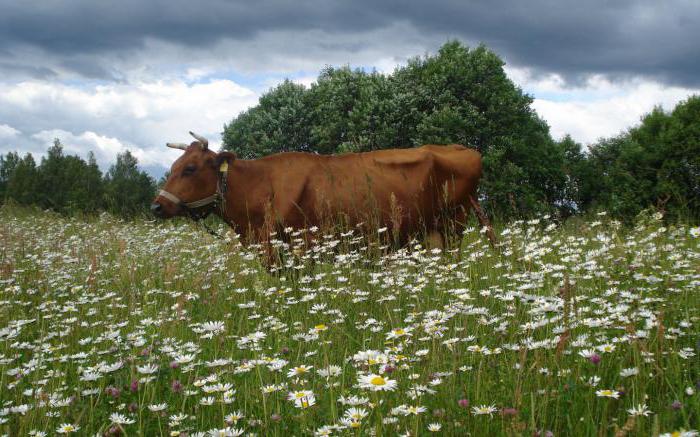

In Tibetan medicine, this plant is considered a miracle cure for rejuvenation. Chamomile tea is a cult attribute. Every day, before going to bed, monks use this healing drink, keeping the secret of its preparation in secret.
In nature, field chamomile is also a plant protector. If chamomile seeds are planted around the apple tree, then the apple moth is not afraid of its fruits. The caterpillars of the whiteworm and cabbage scoop will never be in the garden if chamomile grows there.
Chamomile is a field flower, one of the most beautiful plants in the free fields of Russia. It is a perennial plant, the beneficial properties of which are actively used in traditional and folk medicine. Apart from this, chamomile is known as a delicious honey plant. It is also known that field chamomiles are in demand in cosmetology, they are added to various masks for the face, body and hair. North America is considered the birthplace of chamomile.
Languageless
Another name for this chamomile is fragrant. The plant is quite unusual. At first glance, it doesn't look like a chamomile at all. Instead of petals, the flowers form baskets that have a yellowish-green color. However, due to its chemical composition, which is similar to that of a pharmacy chamomile, the odorous look has the same healing properties. This plant has a particularly pronounced ability to relieve spasms and inflammation.Using these properties of chamomile herb, it is often used to get rid of gastritis, colitis, duodenal ulcers and stomach ulcers.
The baskets of a fragrant plant can be used not only dried, but also fresh.
Fortune telling on chamomile
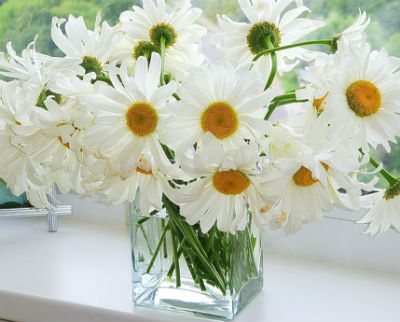

One beautiful and sad legend is associated with fortune telling on the petals, which tells about the Romance and Love. In ancient times, there was a couple in love. One night, the young man had a dream where he saw an indescribably beautiful and touching flower with white petals and a yellow core, which was as simple and naive as feelings for his beloved.
Waking up, Roman found a flower growing nearby, which was exactly the same as what he had seen in his dream. The young man tore it off and presented it as a gift to his beloved Love. The girl was very touched by the magnificent beauty of the flower and began to call it chamomile in honor of the guy. She really wanted that not only she alone experienced similar feelings, but all couples in love could give each other these beautiful flowers. The novel found out about her desire and wondered where to get more such flowers, because he saw them only in a dream. As a result, the young man decided to ask the king of dreams himself and went to him, in spite of the dangers that awaited him on the journey. However, the king turned out to be heartless, indifferent and even cruel when he heard Roman's request, but after learning his story, he decided to fulfill the request in exchange for the fact that the young man will forever remain in the lands of dreams.
For many months, Lyubov was waiting for her lover back, until one day she saw a whole clearing of those very white flowers, which she called daisies. Then Love understood where and why her beloved had gone, and that now he would never return.
It was from this legend that one of the most ancient Russian traditions emerged, namely, divination on a chamomile. The girls closed their eyes, intuitively chose the flowers they liked and plucked their petals, saying the proverb known from childhood: loves - does not love. On which phrase the petal broke off, that was the answer. In addition, chamomile wreaths and bouquets were used in various ritual sacraments associated with attracting a beloved.
Field
This chamomile is also called meadow and wild. Unlike the pharmacy, it has larger and longer leaves and a dense center. The chemical composition of this plant differs from that possessed by representatives of the fragrant and pharmaceutical species. That is why the healing properties of field chamomile are also different. This plant is capable of the following:
- has an antiparasitic effect;
- has an analgesic antispasmodic effect;
- used as a laxative;
- relieves the body of "bad" cholesterol;
- heals wounds;
- tones up;
- boosts immunity.
Chamomile for children
Bathing children, babies including, in a decoction of chamomile today is recommended even by pediatricians. For this, it is better to use dry chamomile purchased at the pharmacy. These baths will benefit babies.
The anti-inflammatory and antibacterial properties of field chamomile will soothe the baby and relieve skin irritations. It is recommended to make chamomile decoctions with a low concentration of the dry plant. The most complete consultation can be obtained from a pediatrician. For children under the age of five, decoctions of field chamomile for internal use are strictly prohibited.
Yellow
What medicinal properties of chamomile (plant species are discussed in the article) are still used in medicine? The plant, which is often called so: field marigolds, or navel, has unique properties. It is a yellow chamomile native to the wild. You can meet it in fields, in green valleys, along ravines, etc. Its main distinguishing feature is the presence of not white, but yellow petals. The chemical composition of this chamomile is similar to that of the pharmacy.That is why they have a similar effect on the body. Especially often, yellow chamomile is used when undergoing a course of treatment for diseases of the gallbladder and liver.
Flowers that look like daisies
There are a large number of plants-relatives of chamomile, with which it is often confused. One of the most similar flowers is its distant relative, the three-ribbed one, which can be distinguished by its convex conical yellow core. Long before the official name appeared, all flowers with white petals and a yellow center were called pupavka, but today the pupavka is a separate plant. Most often, chamomile is confused with the daisy and its most famous garden variety, the daisy Alaska. Today, breeders have bred a huge number of varieties that differ not only in the size of the flower, but also in the color of the petals.
Chemical composition
All types of chamomile used for medicinal purposes are divided into two groups:
- Medicinal. These camomiles include pharmacy, Roman, fragrant, etc.
- Insecticidal. This group includes plants that belong to the genus pyrethrum.
The inflorescences of medicinal chamomiles contain components that affect the functioning of the systems and organs of the human body.
So, the medicinal properties and use of chamomile are influenced by the phytosterols and coumarins contained in its composition, polyene compounds and polysaccharides, luteolin and apigenin, quracetin, as well as isovaleric, antemisic and caprylic organic acids, carotene, vitamin C, tannins, mucus, bitterness and nicotinic acid. The most valuable components that affect the healing properties of chamomile flowers are azulene and chamazulene. These substances have a pronounced bacteriostatic, anti-inflammatory and anti-allergenic effect.
As for insecticidal chamomiles, pyrethrins, which are the most active components of their composition, are capable of killing insects. That is why they were previously used as a means for disinfestation of premises. Plants also helped in the fight against such parasites as lice, itch itching and lice.
How to distinguish pharmacy chamomile from nivyanik?
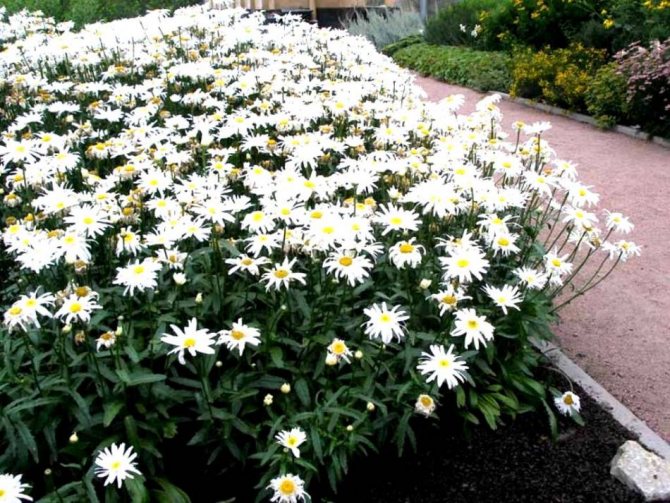

Nivyanik
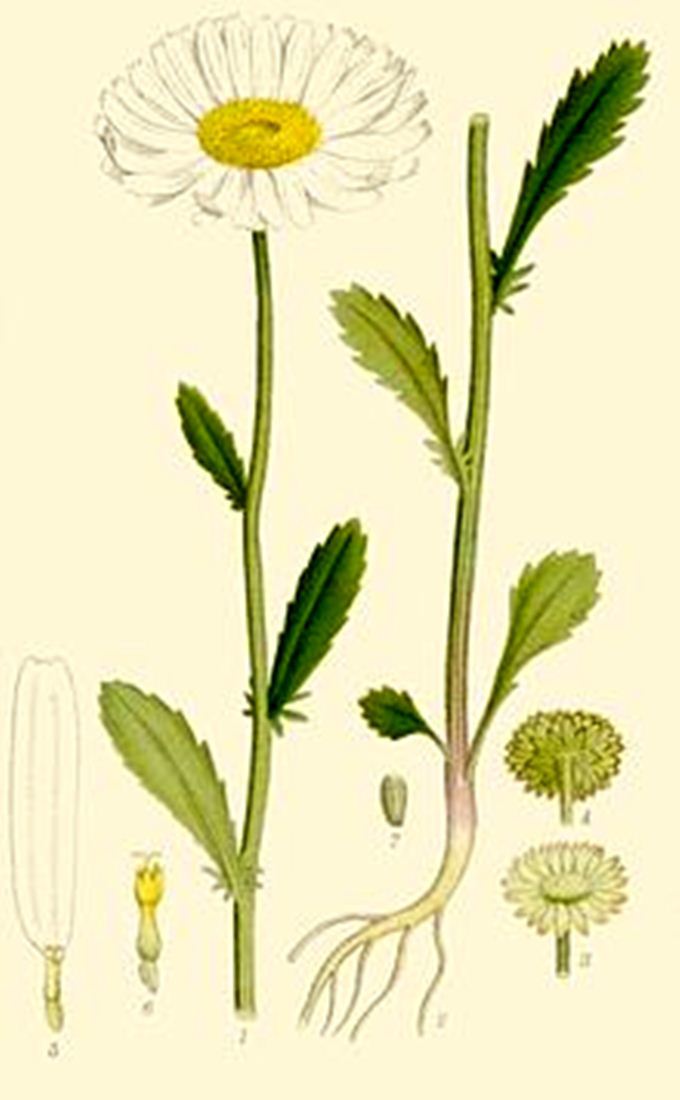

Nivyanik in section
Nivyanik (other name daisy), like chamomile, belongs to annual plants, looks a little like it in flowers.
The difference:
- The daisy has a larger inflorescence - 4-6 cm in diameter, for chamomile - 1.5-2.5 cm
- Grows in meadows in large families
- The leaves are whole, not cut like that of chamomile
- The middle is flat and there is no void if you cut it
- Only one flower per stem
Application area
Consider the beneficial properties of chamomile (many of its other types also have them). Among them, there are three main ones. Namely anti-inflammatory, antiseptic and hemostatic. Disinfecting and astringent properties are inherent in this plant. They are used in the treatment of colds and intestinal ailments.
The choleretic healing properties of chamomile flowers are used to restore liver function. In addition, taking this herb helps relieve cramps, cramps and pain. Scientific studies have shown conclusively that chamomile can relax blood vessels as well as the smooth muscles of internal organs. Eliminates the medicinal plant depressive conditions, accompanied by excessive anxiety. Scientists at the University of Texas have proven the ability of chamomile tea to reduce mortality in older people over the age of 65.
What is included in the plant
The composition includes many trace elements, natural compounds, oils and substances necessary for the normalization and performance of the human body.
- essential oil;
- coumarins;
- plant sterols;
- organic acids: antemisic, nicotinic, caprylic and salicylic;
- flavonoids;
- carotene;
- tannins;
- multivitamins and polysaccharides;
- gum;
- plant compounds: mucous and proteinaceous;
- ascorbic acid;
- apigenin;
- chamazulene.
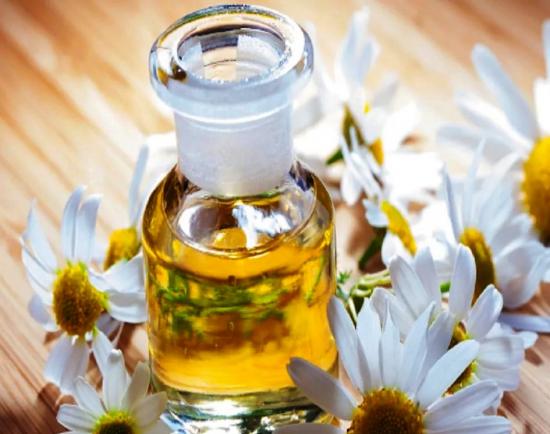

Chamomile oil is used in the production of natural cosmetic products. When dried, the plant contains one percent of essential oil.
Such beneficial ingredients make the herb indispensable in the treatment of many internal and external diseases.
In gynecology
Knowledge of the medicinal properties and contraindications of chamomile for women is very important. This plant is widely used in gynecology. Doctors often recommend their patients to douch using a decoction of this herb. This allows you to quickly eliminate the disease.
What medicinal properties of chamomile are important for women? In diseases of the reproductive system, the plant contributes to:
- Get rid of inflammation.
- Reducing the intensity of spasms and pain.
- Regeneration of the mucous membrane.
- Elimination of pathogenic microorganisms.
For women, the medicinal properties of chamomile can speed up the healing process with vulvitis, cystitis and erosion. Gynecologists recommend their patients to brew chamomile inflorescences. The resulting solution must be taken orally, used for douching, as well as for baths. All this will allow you to get rid of the ailments listed above.
The use of the medicinal properties of chamomile and its use for vulvitis will be most effective if procedures are carried out in the form of baths. They are organized twice a day for 10 minutes. The duration of the course is 7 days.
The healing properties of brewed chamomile also help with thrush. Only with this ailment with an infusion brought to 38 degrees, it is necessary to douche.
If a recently developed erosion of the cervix is found, chamomile will come to the aid of a woman, which will need to be combined with aloe leaves, the pulp of which is added to a decoction of a medicinal plant. The resulting product must be soaked in a tampon and inserted as deep as possible into the vagina.
The use of chamomile is recommended (the healing properties of the plant are truly wide) and for cystitis. This disease is accompanied by inflammatory processes in the bladder, which cause a lot of trouble for women. They suffer from frequent urge to urinate and cutting pains in the lower abdomen. In this case, the prepared healing infusion of chamomile flowers is injected into the rectum using a syringe. Women are advised to use brewed chamomile and wash themselves. This will prevent further spread of the infection.
There are rules for using the healing properties of chamomile and with severe menstrual pain. To get rid of spasms, you should prepare an infusion of chamomile with knotweed, horsetail, cinquefoil and centaury (a teaspoon of each component per liter of liquid). A woman needs to drink this drug during the day in small portions.
When using pharmacy chamomile, you need to know about its contraindications. Among them:
- individual intolerance to the components of the herb;
- a tendency to diarrhea due to the fact that chamomile helps to relax smooth muscles;
- lactation;
- pregnancy (use chamomile during this period with caution);
- increased acidity of gastric juice.
Useful properties of chamomile for women and children
Chamomile is considered an effective female plant. It helps relieve menstrual pain. The medicinal herb has been used for centuries to treat external inflammations: vaginitis, colpitis, thrush, etc. Tampons with chamomile are laid with erosion of the cervix. In addition, the sedative effect of the plant can alleviate the symptoms of menopause.
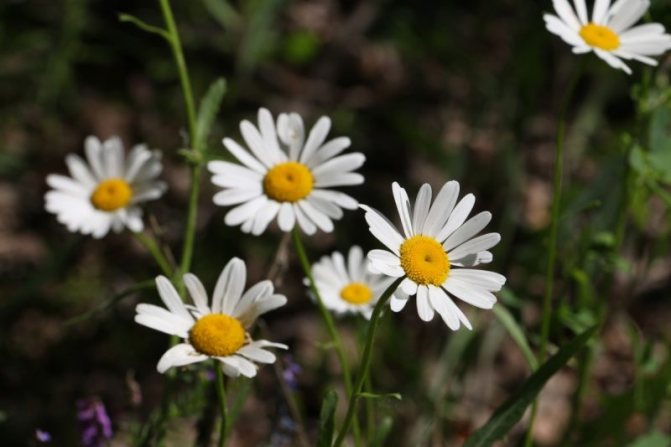

Chamomile is an effective remedy for babies. Pediatricians recommend it to calm the intestines with colic. Drinking tea before bed will help you fall asleep. Chamomile baths eliminate the symptoms of diathesis.
Older children can gargle with medicinal infusion.At a high temperature, a child from 12 years old can be offered a glass of chamomile instead of a pharmacy antipyretic.
With a cold
How does chamomile help in the treatment of ARVI? In such diseases, the medicinal plant is used as an anti-inflammatory agent. You can use its infusion to gargle. This will reduce the severity of pain, reduce the time of their manifestation.
You can also use chamomile for rinsing the nose. A decoction of the medicinal herb will slightly reduce the edema and normalize breathing. The same procedures are carried out to provide antibacterial action. After all, as you know, chamomile is able to suppress the development of some types of streptococcus and Staphylococcus aureus, which in most cases inhabit the nasopharynx and contribute to the onset of inflammatory processes with a cold.
In the event that there is not enough time to prepare medicinal broths, it is recommended to purchase oil from the plant in question at the pharmacy. You can use this medication for rinsing. Preparing a solution for such a procedure does not take much time. You just need to take a glass of warm water and add a few drops of essential oil to it. 7-10 drops are dissolved in a liter of water for inhalation.
It should be borne in mind that the use of chamomile for colds should be limited in time. It is necessary to take 3-4 days to carry out procedures with a medicinal plant. In the event that the patient does not feel any improvement in his health, he will need to consult a doctor. Keep in mind that long-term use of chamomile can be addictive. Nevertheless, during a flu epidemic, the use of a solution from its flowers will be an excellent preventive measure. In this case, the solution must be used for rinsing the mouth and rinsing the nose after visiting places with a large crowd of people. Such procedures will wash out all bacteria and viruses that have settled on the mucous membranes.
Spring is good, but winter is better
Unlike many types of medicinal plants, chamomile is not whimsical at all. But, in order to get more coveted baskets, some subtleties should be remembered. The plant prefers light, sandy to medium loamy soils that are not prone to crust formation. The soil is dug up, rhizome and root-sprouting perennial weeds are carefully selected. Introduce 1-2 buckets per 1 square meter of compost or, if there is none, then they are limited to mineral fertilizers. Depending on the fertility of the soil on the site, you can apply 20-30 g / m2 of nitrogen, phosphorus and potassium fertilizers. After that, during the winter or sub-winter sowing period, the site is carefully leveled and rolled over large areas with rollers.
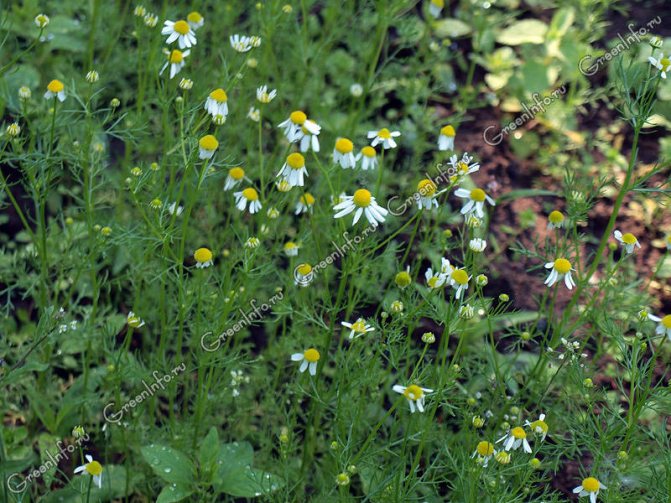

Chamomile (Matricaria recutita)
At the summer cottage, it is also advisable to do something similar. Chamomile seeds are very small and must be sown very shallowly to germinate successfully. Rolling helps prevent the topsoil from drying out. When sowing in spring, the soil is leveled in the spring before sowing and must also be slightly compacted. Of course, it is quite difficult to come up with something replacing rolling on a small bed, so you can simply compact the soil in the grooves with a stick or the edge of your palm. The terms of winter sowing in the Non-Chernozem Zone are from August 20 to September 10.
Before winter, they sow 7-10 days before the onset of stable cold weather, that is, in late October - early November. In the spring, sowing is carried out as early as possible. Before sowing, the seeds can be mixed with dry sand in a ratio of 1: 3-4. You can mix the seeds not with sand, but with finely crushed superphosphate. This will allow the seeds to be sown more evenly. With winter and spring sowing, the seeds are embedded in the soil no deeper than 0.5 cm. During winter sowing, they are not sprinkled with soil at all. Chamomile seeds are photosensitive, that is, they germinate faster when exposed to light. The distance between the rows is 45-60 cm.You need 0.5 g of seeds per square meter of area (no sand!).
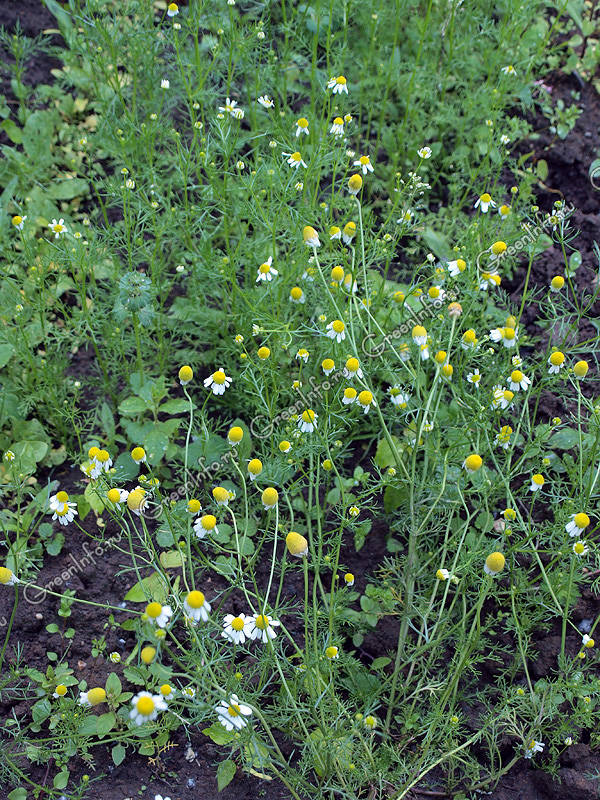

Chamomile (Matricaria recutita)
Of the listed terms, the best is, perhaps, winter. Firstly, at this time there is not so much work on the site as in the spring, and secondly, the plants overwintered in the rosette phase are ready in the spring to make the most of the reserves of spring moisture in the soil. By the time of flowering, chamomile turns out to be up to 50 cm high, which greatly facilitates cleaning. During the spring sowing period, it can bloom, barely reaching a height of 25-30 cm. And given the very dry first half of summer in recent years, this is important. The yield of inflorescences during the winter sowing period is greater, and the inflorescences themselves are much larger - it is pleasant to collect.
Care is very simple - weeding and loosening. In industrial culture, chamomile is not watered, but on your site it is quite possible to do 2-3 waterings during the period of growth and the beginning of budding - in a dry summer they will more than pay off.
Collecting flowers begins as they bloom, with a frequency of 4-6 days. In order to stock up on seeds for the next year, some of the plants are left, and when the baskets acquire a conical shape, they are cut off and laid out on paper. When the heap is dry, the seeds are threshed and sifted through a sieve. At home, it is quite difficult to completely clean the seeds from the remnants of flowers, but this is not necessary. This will not affect the sowing qualities of seeds. Only the seeding rate should be 2-3 times higher. The shelf life of the seeds is about 2 years. After that, their germination begins to decline sharply.
For allergies
This ailment cannot be inherited. Allergy is an individual problem of a person and may not appear for a long period. The main reason for its occurrence is a violation of the immune system, which can be eliminated with the help of chamomile. This medicinal plant has proven itself especially well for allergic skin rashes. Moreover, this problem can be eliminated even in the smallest children. To do this, just add a decoction of chamomile to the baby bath. Such procedures are recommended to be carried out in a course of 2-3 days. An alternative to the baths will be lotions in the form of a piece of tissue soaked in chamomile infusion, which should be applied to the lesion.
Healing qualities
Strengthens human immunity, increases resistance against pathogenic and dangerous microorganisms. A person is less sick with colds if the product is used as a prophylaxis.
It stabilizes the performance of the digestive system, food is absorbed faster, and appetite improves.
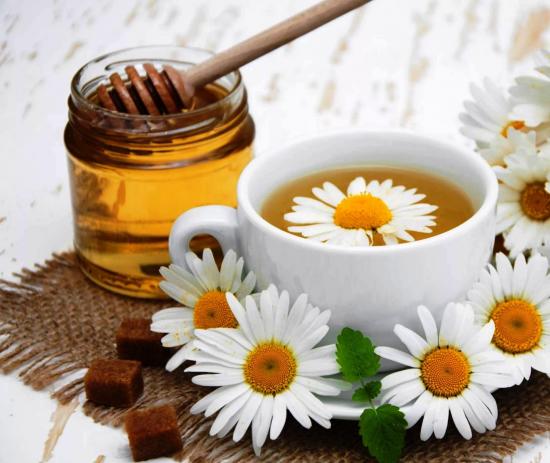

Has an antimicrobial effect.
It acts as a good sedative, but does not affect the body as a sleeping pill.
Restores the efficiency of the kidneys, liver, stomach.
Has a regenerating, diaphoretic and anti-inflammatory effect, quickly eliminates spasms.
It has an anti-allergic effect.
Improves the structure of the skin, making it alive, gives a natural shine.
Revitalizes the affected hair, restoring the functionality of the hair follicles.
Used to treat such pathologies:
- dermatitis;
- diathesis;
- eczema;
- Chronical bronchitis;
- tracheitis;
- pneumonia;
- stomach and intestinal colic;
- with inflammation of the mucous membrane: gastritis, enteritis;
- in the treatment of gynecological diseases: cystitis, inflammation of the ovaries and kidneys, normalization of the menstrual cycle;
- severe headaches, especially migraines;
- colds.
Chamomile is used as a therapeutic therapy for adults and children, but you need to make sure that there is no allergy to one of the ingredients. Use with caution in newborns, consultation with a pediatrician is necessary.
With prostatitis
Prostate disease can occur in men for several reasons. One of them is the negative impact of pathogenic microorganisms.They also contribute to the activation of the inflammatory process. In order to eliminate the disease, traditional medicine recommends the use of medicinal herbs, including chamomile. To eliminate such a delicate problem, you will need an infusion of the plant (3 tablespoons per 1 liter of water). It must be drunk several times throughout the day. The infusion can also be used in the form of enemas. Such procedures allow you to get a good effect on prostatitis in its acute forms.
Where is the plant found?
Odorless chamomile is a weed that infests grain fields and forage meadows. It is found in dachas and vegetable gardens, on roadsides and around garbage dumps. Weed thickets are often found along the banks of water bodies. The plant is especially dangerous for crops of winter rye near forest plantations.
Odorless chamomile requires a certain level of humidity, therefore, in drier places, it gradually moves to beams, ravines and lowlands. The plant spread widely throughout Europe, captured Russia, Belarus, Ukraine, the countries of the Lesser Caucasus and partly China.
Not very abundant thickets of dog chamomile are found in North Asia and America.
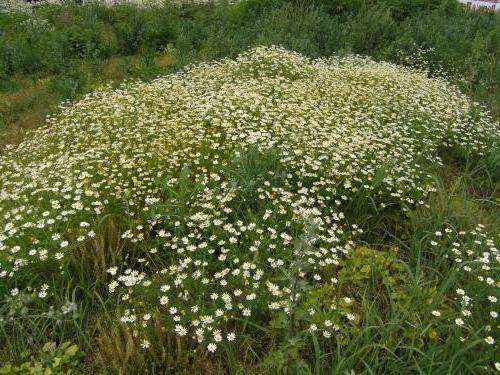

For eye treatment
Chamomile is also used in ophthalmology. With its help, it is recommended to treat conjunctivitis, which often becomes the cause of allergies, as well as the penetration of a viral or bacterial infection into the body. The use of infusions and decoctions of chamomile allows you to relieve inflammation and soothe pain. With these funds, the eyes are washed. Such procedures must be carried out every 2 or 3 hours. Eliminates inflammation and chamomile compress. For him, they take an infusion of the plant, moisten a cotton pad in it and apply it to the inflamed eye.
Chamomile also helps in the fight against conjunctivitis caused by viruses and bacteria. But if after 1-2 days after the start of treatment, the patient does not feel any noticeable improvements, it would be better to consult a doctor.
Application in cosmetology
Among any cosmetic products, you can find products with the addition of chamomile extract. This plant is so popular for its antiseptic properties. It is added to shampoos, creams, lotions, toothpastes, body oils, lipsticks, soaps, etc.
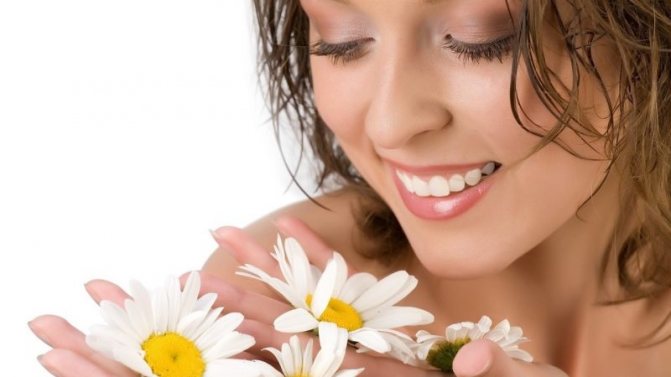

Chamomile soothes the skin, relieves inflammation and itching. Prevents the development of allergies. Softens, restores, heals, removes redness. Suitable for sensitive skin.
Chamomile is versatile. Moisturizes and flushes away excess sebum at the same time. Restores balance. It is part of skin care products for all skin types.
Camomile creams and lipsticks form an invisible polysaccharide film on the surface of the face, which prevents moisture evaporation and creates favorable conditions for the action of natural antioxidants. Chamomile in cosmetics prevents premature aging.
With hypertension
Unfortunately, it is impossible to completely cope with an increase in blood pressure. Nevertheless, a person can significantly improve his condition and for a long time forget about those unpleasant sensations that hypertension causes. To do this, it is not at all necessary to constantly take pharmacological preparations, to which the body quickly gets used to it, "requiring" an increase in dosage. Herbal teas from the collection of medicinal plants will help you feel healthy. Such funds will dilate blood vessels and have a diuretic and sedative effect. A healing potion is brewed in the same way as ordinary tea. It is recommended to drink it warm. Herbal infusions are stored for no more than two days by placing them in the refrigerator. But if there is such an opportunity, it is still better to prepare a single dose.
Hawthorn, hibiscus, strawberry leaves, Chinese lemongrass, motherwort, valerian root, calendula, peppermint, rose hips and chamomile are used to lower blood pressure.Their healing properties allow you to restore well-being by solving the many health problems that accompany hypertension. But it should be borne in mind that the greatest effect can be achieved by using not single herbs, but collections from them. This will solve the problem as a whole.
Field chamomile, description of the appearance, structure of the plant
The most common herb is field chamomile. The plant is small, but with a strong root system. The stem is about 40 centimeters high. The buds are formed in one basket, the flowers are white with a bright yellow center.
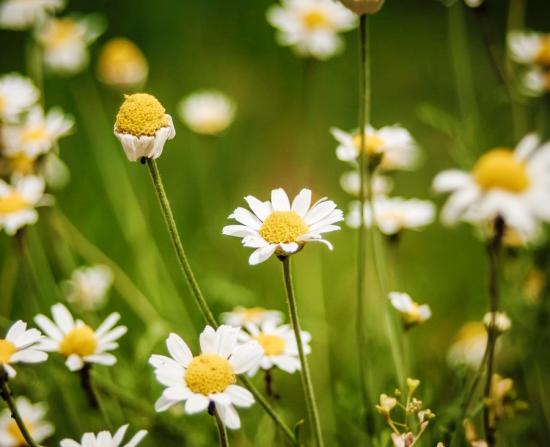

It blooms in early June and pleases with its tenderness until the very frost.
It grows in fields, wastelands, on the outskirts of roads. Prefers alkaline, sandy and drained soil, loves a lot of light and warmth. Some plant this herb for decoration in their garden plot, in this case it is important to monitor the reproduction of plants, since this species produces a lot of seeds.
Field chamomile perfectly adapts to any weather conditions and is frost-resistant.
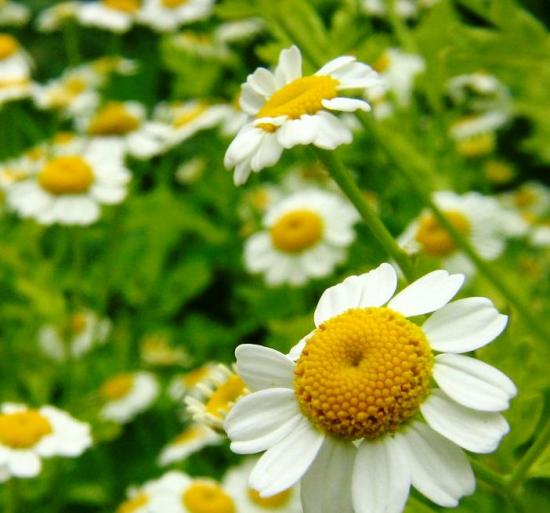

The grass is propagated by seeds. Seeds are planted in the ground to a depth of no more than one centimeter.
For joints
Chamomile is also used to combat pathologies of the musculoskeletal system. The plant contains essential oil, the main components of which are bitterness and organic acids, matricarin and matricin, amazulene and fatty acid glycerides. When the flowers are boiled, chamazulene is formed in them. This substance is the result of the breakdown of matricarin and matricin. This element has disinfectant and anti-inflammatory properties. It activates the processes of tissue regeneration, including the musculoskeletal system.
In case of rheumatic and gouty pains, they take baths, in which a decoction of chamomile is added. In this case, the water temperature should not exceed 40-50 degrees. Otherwise, the chamazulene will partially disintegrate. Such treatment is also carried out externally. At the same time, compresses from steamed inflorescences of chamomile and black elderberry are applied to the sore joints for 4-6 hours. Baths can also be used to eliminate pathology. To prepare them, you need a decoction of chamomile flowers, in which the diseased joint of the leg or arm is placed. It is necessary to carry out such procedures for 10-15 days. The duration of each of them should be from 15 to 20 minutes.
Chamomile tea helps with attacks of gout and arthritis. In addition to its analgesic effect, it produces a sedative and diuretic effect. And as one of the components of the herbal collection, chamomile is used to cleanse blood vessels. This procedure is important to combat arthritis.
Treatment of diseases with chamomile
The main active ingredient required for the treatment of gastrointestinal diseases is chamazulene. The longer the plant material is boiled, the more of this component is found in the solution, since during the heating process it is additionally formed from by-products. Therefore, in the treatment of digestive disorders, it is the broth that is used as the most effective dosage form.
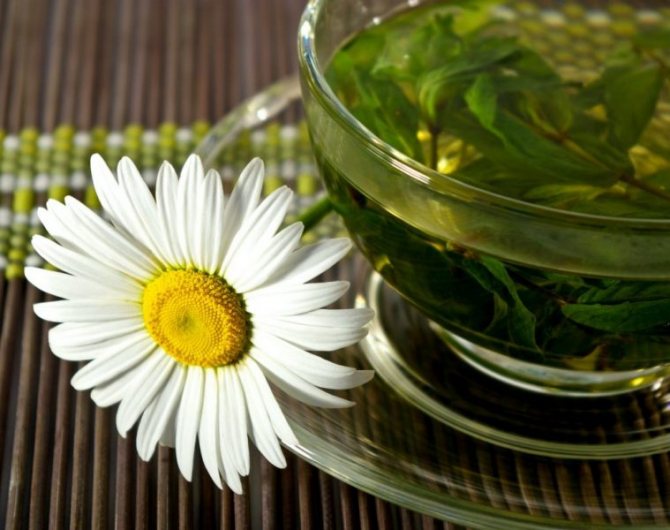

The drink is prepared in a water bath. Pour a spoonful of dry inflorescences with a glass of hot water. Simmer on the fire for 30 minutes. Remove, insist 3-4 hours, filter and consume half a glass three times a day before meals. The course of treatment is regulated by a doctor, depending on the severity of the disease.
The decoction is used sporadically to relieve joint pain in gout. They are abundantly moistened with gauze, which is applied hot to the affected area. The compress is wrapped in heat-insulating materials and left for 1-2 hours.
For setting microclysters in the treatment of hemorrhoids, use 30-50 ml of warm chamomile broth.
To prepare the infusion, a tablespoon of medicinal raw materials is placed in a glass of boiling water. Insist under the lid for 3-4 hours.
In the treatment of asthma, the solution is taken at night, one third of a glass for 2-3 weeks.During a cold, gargle 3 times a day after meals until the symptoms are completely eliminated. At a high temperature, take a glass of hot drink once.
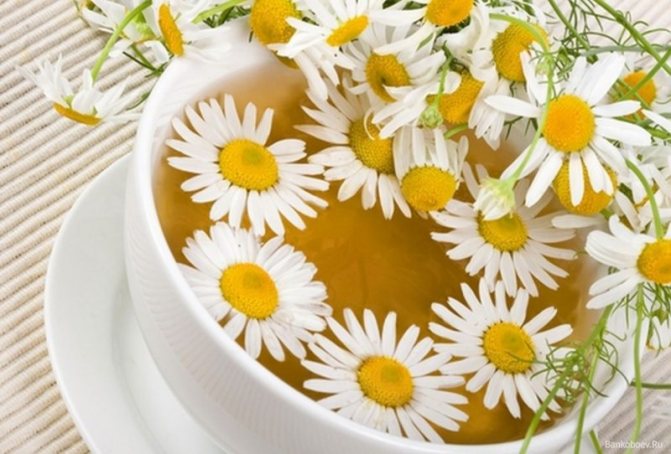

Chamomile tea is brewed as an infusion, but kept for a shorter time. It can be drained after 10 minutes.
To promote health, you need to drink one cup a day in the morning on an empty stomach. It is possible during the entire unfavorable season.
Essential oil for external use is diluted with clean water (a teaspoon per glass). Apply to the gums in the form of applications for stomatitis up to three times a day. With the same frequency, gargle with sore throat and treat the affected skin. The treatment lasts until complete recovery.
For problems with the gastrointestinal tract
Chamomile is beneficial for people suffering from diseases of the intestines, stomach and pancreas. It is recommended that you consult with a specialist before using this natural remedy. But in any case, the course of treatment with chamomile should be limited to 3 months.
A decoction, infusion or tea of this medicinal herb is recommended for acute or chronic gastritis. Chamomile will also help with pain in the stomach, removing inflammation from its mucous membrane. It is recommended to drink the prepared potion only in a warm state. It will not only eliminate the problem with the gastrointestinal tract, but will also strengthen the immune system and help to relax.
Chamomile will also help with constipation, as well as bloating. Such phenomena are accompanied by a fermentation process, which is why the stomach swells, leading to the onset of flatulence. Chamomile will definitely get rid of such problems. It can be purchased in tea bags and drunk throughout the day like regular tea. You can prepare a decoction or infusion of this medicinal herb.
With gas constantly appearing in the intestines, a medicinal collection will help. It must include mint leaves, chamomile inflorescences, seeds, cumin and fennel, as well as valerian root. You can also use another mixture of herbs. For example, by combining chamomile with St. John's wort and plantain (all in equal proportions).
This medicinal plant also helps with duodenal and stomach ulcers. In this case, use its infusion, applied in 30 minutes. before or immediately after meals (2-3 tsp per liter of liquid). The course of treatment is 1 month.
Tips and tricks for collection and procurement
The ideal time to harvest chamomile is when it blooms. Experienced agronomists try to harvest it around the fifth day after blooming. At this time, the inflorescences have the following appearance: the petals are located in a horizontal position, the core is not fully open. It is during this period that the maximum concentration of nutrients is concentrated in the plant.
The process of harvesting medicinal field chamomile is not so simple. The whole algorithm is divided into several stages.
Attention! Harvesting should be done in dry and warm weather. The inflorescences must be carefully removed from the stem by hand or using a special tool. It is forbidden to pull out the plant along with the root system.
Collecting inflorescences
The duration of the flowering culture is from May to the end of September. For the entire growing season, the collection can be done three times.
After flowering, chamomile loses its beneficial properties, and it makes no sense to make blanks from such material.
Important! Avoid picking the plant in contaminated areas, such as along the side of a road or near industrial facilities.
Drying flowers
The correctness of this stage will determine how useful the resulting product will be. If you harvest only flowers without stems, then they must be evenly spread in one layer on a flat, clean surface: flooring, windowsill or newspaper.
It is necessary to exclude direct exposure to sunlight, they should be stored in partial shade. In a room with spread out flowers, it is desirable to ensure good air circulation.
If the flower was collected with the stem, then the plants are collected in bunches, tied and hung in a dark, dry room with good ventilation.
How to dry chamomile
The product is ready when it becomes rusty and dry.
During drying, all collected material should be regularly turned over. Thanks to this simple procedure, air circulation will be ensured, which will allow the raw materials to dry faster. Drying time is usually no more than two weeks. Approximately 1 kg of fresh raw materials yield no more than 250 g of dry raw materials.
Attention! You should not dry field chamomile in electric dryers and cabinets, because as a result of heat treatment, most of the useful and nutritious substances are lost.
The final stage is preparation for storage
There are several options:
- Perhaps the easiest is to arrange the inflorescences in dry and clean cardboard boxes. Store in a cool and dark place.
- Not difficult, but more expensive option. For implementation, you will need to purchase special glass jars. Dry chamomile looks very attractive in them, containers can be decorated and used for interior decoration.
- Cloth bags. In this case, it is necessary to use bags made of natural, undyed and clean fabrics. The dried material is carefully laid out in bags and hung on the wall. In this case, the flowers will retain their shape and do not lose their original appearance.
Chamomile is a unique plant, the beneficial properties of which can be used for the benefit of yourself, your family and your pets.
Omash is familiar to both adults and children, but not everyone knows what wonderful properties it has.
A detailed description of the field chamomile plant will help evaluate all its positive aspects, and actively use it for the treatment of diseases and for cosmetic purposes.
This herb is widely used in folk medicine for the treatment of children.
Toothache
Medicinal chamomile is also used in dentistry. The infusions and decoctions prepared from its inflorescences will help well against toothache. Rinsing the mouth with an infusion of the plant will help alleviate the discomfort. To enhance the effect, sage or fennel can be added to the drug.
Chamomile tea will help reduce sensitivity to pain and calm down. You can buy it in sachets at any pharmacy.
With gum disease, a compress from a healing plant will help. For the procedure, it is necessary to moisten cotton wool in chamomile oil and apply it for 10 minutes. to the diseased area. In relation to the gums, the compress should be located on both sides at once. This will allow the active substances of the plant to penetrate the tissues faster.
In what areas does the flower grow?
Small white flowers of chamomile are most often seen on well-lit lawns and in the steppe zone. For the normal development of this culture, a large amount of sunlight is required. The plant grows well on poor and even arid soils, but requires at least minimal watering. The flower does not tolerate the complete absence of moisture.
Excess water also negatively affects the culture, it causes rotting of the root system, therefore, chamomile cannot be found in lowlands and very swampy areas. But on the edges of forests and even along the roads, you can see it very often.
Often, the wind carries small and light seeds to the fields where crops are grown. The plowed fertile soil, well warmed up by the sun's rays and generously fertilized with various organic and mineral additives, creates ideal conditions for the development of a medicinal plant.
In garden plots, wild-growing crops are also a frequent visitor. However, in this case, the flower has a negative effect on the growth of vegetables, as it quickly spreads over the entire area of the garden and interferes with the normal development of cultivated plants. That is why every second summer resident destroys an ordinary chamomile in his personal plot.
Some pre-harvest flowers and dry them. After all, it is this part of the plant that is useful. Decoctions and delicious chamomile tea are prepared from it, which is able to heal the human body from various ailments.
For skin diseases
The healing properties of chamomile help us in the fight against pathogenic microorganisms. That is why the plant allows a person to get rid of various skin diseases caused by microbes, which are the causes of the formation of abscesses and boils. To eliminate lesions, the skin around them must be treated with a cotton swab dipped in an alcohol solution of chamomile. A decoction of the flowers of this plant is able to cure ringworm. This product will need to be rubbed into the scalp 30 minutes before washing.
Chamomile will also help with pathology called "red nose". This disease is caused by the demodex mite. Compresses based on a decoction of chamomile flowers will help get rid of it. This plant is great for abscesses and abscesses. Compresses and lotions with the use of medicinal herbs will help relieve inflammation. They are applied for a maximum of 60 minutes.
As you can see, the use and medicinal properties of chamomile are extremely diverse. Be healthy!
A source
Useful properties of chamomile
Chamomile is the most widely used medicinal plant. It is registered as a pharmaceutical product in 26 countries of the world. It is gold that grows underfoot, an everyday product and a medicinal elixir.
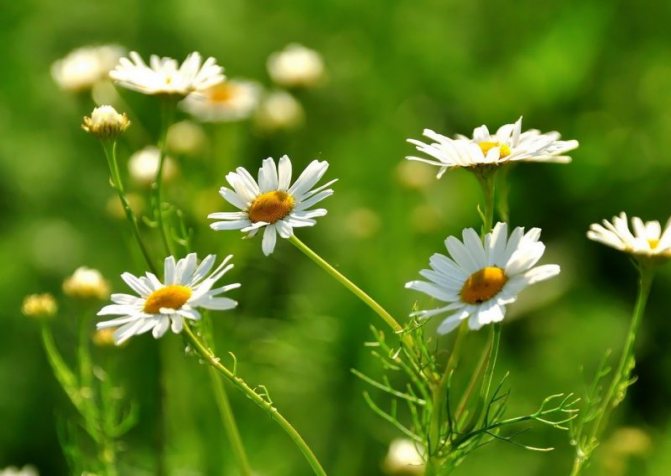

The healing properties of chamomile are determined by the high content of essential oil in it (up to 0.8%), the largest amount of which is found in inflorescences. Therefore, baskets are the main raw material for medicinal products.
The main active ingredient of chamomile oil is chamazulene.
It is an aromatic compound that has the following properties:
- stimulates the brain;
- calms the nervous system;
- relaxes smooth muscles, relieves spasms, activates cerebral blood flow;
- speeds up the heartbeat, supports the heart;
- prevents the development of an allergic reaction;
- has a positive effect on the functioning of the digestive tract, suppresses inflammation, promotes healing of the mucous membrane, eliminates pain, and reduces gas formation.
Chamomile is considered a natural antidepressant. It tunes the brain for productive activity and at the same time calms the nerves, restores sleep, and normal performance.
Chamomile herb is harvested in smaller quantities. It is not as rich in essential oils (up to 0.4%) as inflorescences, but in terms of the amount of flavonoids - natural antibiotics, it bypasses bright baskets.
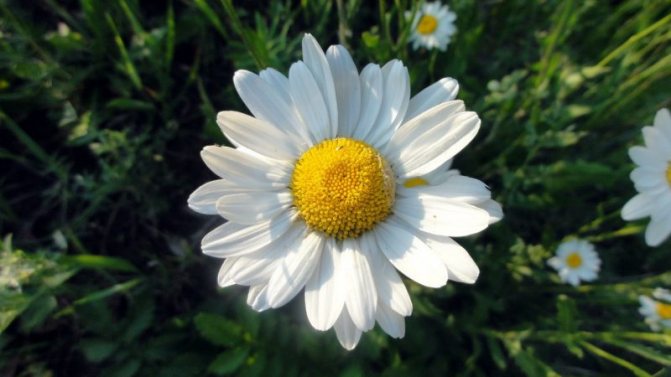

Chamomile bioflavonoids inhibit the activity of pathogenic fungi and bacteria. They stop fermentation processes in the intestines. Infusions are effective for external and internal use. Chamomile is used for washes, rinses, baths, lotions, irrigations and compresses.
Organic acids and aromatic substances contained in inflorescences have a healing and anti-inflammatory effect. Infusions are used for irrigating hemorrhoids and genitals, gargling, rinsing the nose, washing your face, rinsing your hair.
Chamomile remedies relieve itching, suppress redness, remove inflammation, therefore they are applied as lotions for various kinds of rashes, conjunctivitis, stomatitis.
Chamomile color is an effective choleretic. The broth relieves the spasm of the ducts, improves the flow of bile. Regulates appetite and digestion, has a mild laxative effect.
The flowers of the plant are steamed for colds, flu and bronchitis. Drink as a diaphoretic and anti-inflammatory at any stage of the disease. Chamomile liquefies phlegm, improves its discharge, fights coughs and fever.
Briefly about the flowers themselves
The inner tubular chamomile flowers are quite tall, elongated, white at the base, yellow above, have 5 petals.When ripe, the petals open and move apart, revealing the column and stamens. There are also five stamens in each flower, but their anthers grow together, forming a tube around the column.
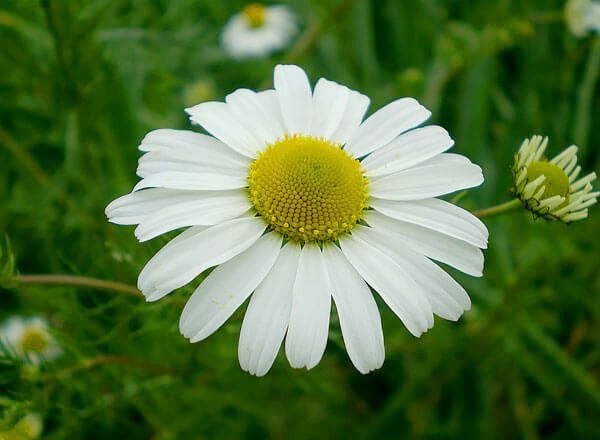

As a result, the tubular flowers look like stamens in appearance.
The formula of inner flowers is ↑ Ч0-∞Л (3) Т0П (2).
The outer ligulate flowers are about 1 cm long; the edge farthest from the receptacle is serrated and bears 5 teeth. Their formula is * Ч0-∞Л (5) Т5 П (2).
Interestingly, the appearance of the reed flowers differs from different daisies.
For example, this is how the flowers of alpine chamomile growing in high-mountain meadows look like:
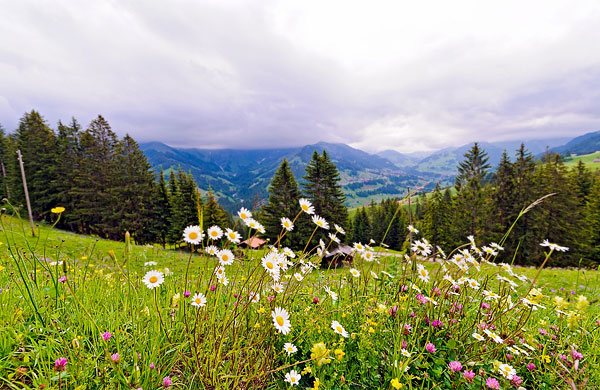

And so - Roman chamomile, often grown in gardens:
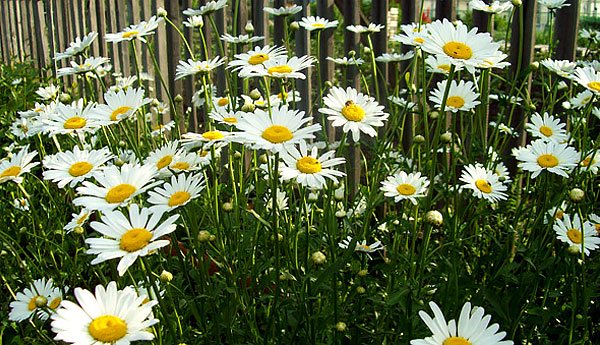

If there are few reed flowers in the inflorescence - a maximum of 30 pieces, then there are several hundred tubular flowers. Not all inner flowers will be tied into fruits, but their number is still enough for one plant to produce 3000-4000 thousand seeds per season.
All flowers bloom unevenly and at different times. Initially, at the inflorescence, the marginal flowers are directed upwards and completely cover the flat yellow center. Gradually, as they bloom, the reed flowers drop and tilt to the sides, and the receptacle rises and protrudes, acquiring a hemispherical shape. At this time, the lowest tubular flowers, closest to the white "tongues", begin to bloom. Gradually, the marginal flowers descend lower and lower, all the higher located tubular flowers bloom, and the receptacle itself rises, acquiring a conical shape.
The photo below shows an inflorescence with flowers at different degrees of maturity:
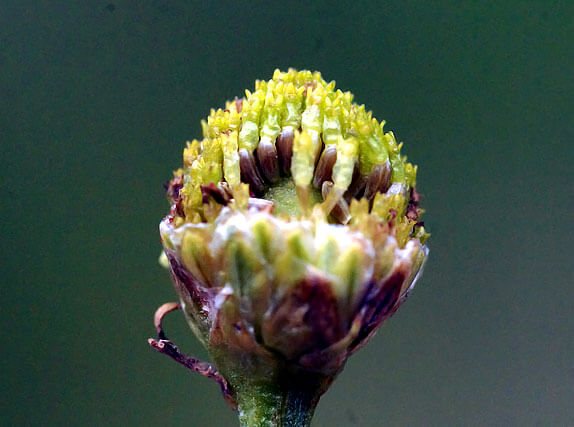

By the time the fruits are tied in the lower tubular flowers, the marginal ones begin to fade and sprinkle. At this time, the uppermost tubular flowers may not yet bloom, the lower ones are already tied with fruits. When the entire inflorescence is seeded, the marginal flowers fall off completely and a brown cone with seeds remains in place of the basket.
Weight loss benefits
This flower is used as an additional cleanser during the preparation of the body for diets.
So, for example, in addition to the usual decoction, you can use an enema or micro enema from this plant.
It will require:
- 2 tablespoons of dried flower;
- 500 ml hot water.
Pour hot water over the chamomile collection for half an hour. Then filter the liquid and add about another liter of water.
Chamomile in this form is best used in a course of five enemas once a year every other day, so as not to harm the intestinal microflora.
What diseases is chamomile susceptible to?
This flower has a very strong immunity. He will share his strength with a person, strengthen his health, and improve his well-being. But at the same time, he can still get sick himself. Like all plants, it is not immune to certain diseases. In particular, from powdery mildew, which is well known to the experienced gardener. Many garden crops do not have immunity to it.
Powdery mildew can be recognized by the white bloom on the leaves and stems. It gradually changes color, becomes brown.
Important! You can save seedlings by protecting them from moisture - timely removing fallen leaves, weeds, loosening the soil, avoiding excessive watering.
Rust, an equally common disease in horticultural crops, can also kill chamomile. If red spots appear on the outer part of the foliage plates, it is probably an attack of this fungus. The most effective prevention method, again, is the creation of conditions that the harmful microorganism "will not like" - providing access to sunlight to all layers of foliage and soil. Measures aimed at strengthening the plant as a whole are no less important - fertilization, moderate, regular watering.
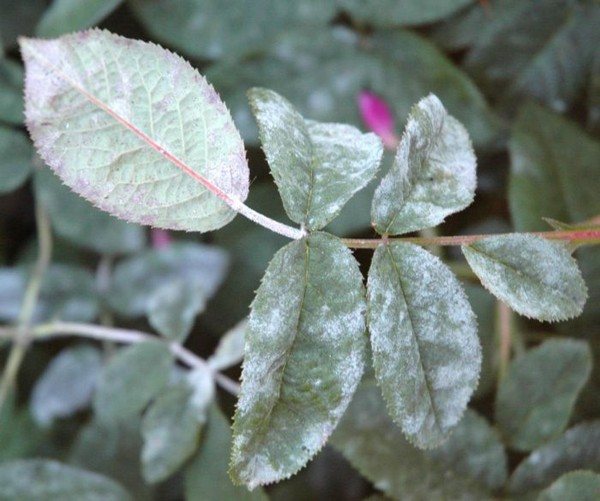

Chamomile is often affected by powdery mildew.
Such fungal infections as fusarium, gray rot are also considered characteristic of chamomile. In case of gray rot, it is recommended to uproot and burn infected bushes, since microorganisms can "move" to neighboring plants.Signs of this disease are brown spots on foliage and stems. Their area is rapidly increasing.
Important! A sure sign of Fusarium is a thinning of the stem, yellowing of the foliage. This suggests that the fungi have settled in the root system and are destroying it.
Fungicides should be used to treat fungal infections. These drugs have worked well. They will help save the flower garden. But chamomile is not only susceptible to fungal infections. She has no immunity to some pests. In particular, to the star-winged front sight. The optimal environment for her is the weed around the plant, and chamomile is one of her favorite delicacies. If weeds are removed as soon as they appear, the star-winged fly will not be able to take root in the flower bed.
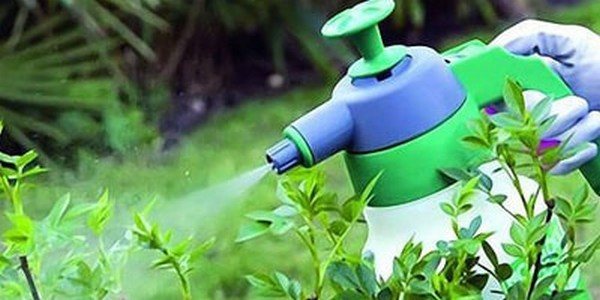

To treat plants, you need to use fungicides
It has been noticed that aphids, as well as thrips and wireworms, often attack this flower. The latter are known for settling in a flower garden for more than one year. And thrips are "famous" for their ability to quickly destroy all seedlings.
Important! Drugs for treatment should be selected specific, in accordance with the type of pest.
The immune system of chamomile will be stronger in each new generation grown under human care. Going out of town in August, you can collect seeds to restore order in a flower bed, a garden bed, disturbed by fungal microorganisms or insects.
At any time of the year, you will be able to buy seeds of this flower in a florist shop. Growing wild plants on the windowsill is a difficult task. But chamomile is so beautiful, useful that you can take a risk, not endanger it, eliminate the likelihood of a pest attack, germinate seeds and leave them in the room, along with other flowers.
Contraindications
Doctors categorically do not recommend that pregnant women take any decoctions and tinctures of chamomile. The fact is that the wild flower is able to stimulate the production of estrogen. For a successful pregnancy, the amount of estrogen in the ovaries should not exceed the norm.
Otherwise, it can negatively affect the course of pregnancy, sometimes lead to early termination. It should also be borne in mind that the uncontrolled use of drugs based on field chamomile can lead to headaches and vomiting. When treating eye diseases, chamomile decoctions should be used only after consultation with an ophthalmologist.
How to prepare a medicinal plant
Chamomile may be required at any time, and it makes sense to prepare it for future use. Inflorescences without stems are used as medicinal raw materials.
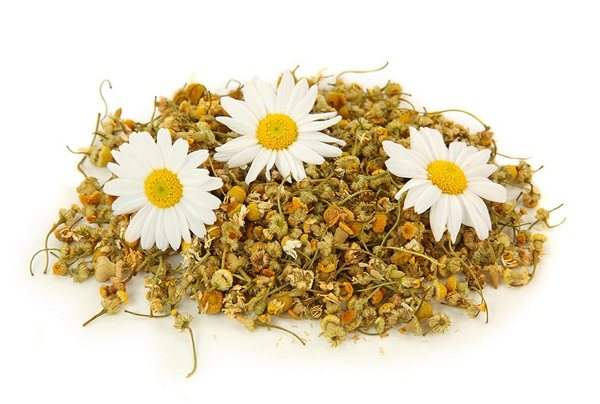

Chamomile can be prepared for future use
The time when it has come to collect medicinal chamomile begins with the beginning of its flowering - while the yellow small flowers blossomed only along the edges of the receptacle, and the white petals did not bent down.
The collection is carried out in sunny dry weather. Flowers are cut at the base with scissors or plucked by hand. Drying is carried out in the open air.
High-quality raw materials have a strong aroma, bitter and pungent taste. The shelf life is from 1 to 2 years.
This is a plant with great medicinal potential, so you should not use it immensely and thoughtlessly. A smart approach is needed here. Then a natural healer will only benefit.
Where does chamomile flower grow in Russia?
Medicinal chamomile is widespread in the south and in the middle zone of the European part of the CIS and in the southern regions of Siberia. It grows along the edges of coniferous, mixed and deciduous forests, along clearings and roads, in clearings, young fallow lands, in settlements, crops and gardens, in fields, meadows, wastelands. That is, the question of where chamomile grows can be answered with confidence - everywhere!
In the wild, it is most often found in the Krasnodar Territory and the Rostov Region of the Russian Federation. Where else does chamomile grow in Russia in its natural habitat? Separate areas of the range exist in Western Siberia - in the Ob and Yenisei basins, as well as in Eastern Siberia - in the upper reaches of the Angara, Shilka and Lena.Also, this flower can be found in fields, vegetable gardens, near dwellings in all regions of the European part, as well as in Transbaikalia.
Separate habitats are known in Karelia, Komi, in the region of the middle reaches of the Ob. Once, as an alien, it was found even in the south of the Far East.
Where else is the chamomile plant found?
The homeland of chamomile pharmacy is Southern and Eastern Europe. As a wild plant in Europe, it is found almost everywhere. In the wild, the medicinal plant is widely found in the Balkans, southern Italy and Spain.
Medicinal chamomile is cultivated in France, Hungary, Belgium and other countries. As an essential oil and medicinal plant, it is grown in Moldova, Belarus, Western Siberia and the Krasnodar Territory.
Hefty tracts of chamomile are found in Crimea and in the south of the Kherson region of Ukraine. In Ukraine, chamomile is grown industrially in special farms.
If we talk about where the chamomile plant is still found, we can note the Ciscaucasia, Dagestan, Central Asia and Kazakhstan. Chamomile is also cultivated in large areas in Ukraine, Belarus and Moldova.
Many centuries ago
Which plant is poisonous and which is useful - people began to try to figure it out during the primitive communal system. Chamomile was recognized as a very useful flower and began to be cultivated. It is not known for sure whether it was included in the list of plants in the gardens of Semiramis in Babylon, but in Ancient Greece and Ancient Rome it was used to treat abrasions, injuries, colds, and ailments. Belladonna was more popular to a certain extent. Cleopatra was known to love rose petal baths. The elitism and sophistication of chamomile was questionable, nevertheless, it fascinated.
It appeared as an independent species in Europe. This is indicated by indirect signs - mention in historical documents and involvement in folklore. Some researchers claim that the species originated in North America.
Important! Today it grows on all continents. Unpretentiousness to climate and soil is its feature.
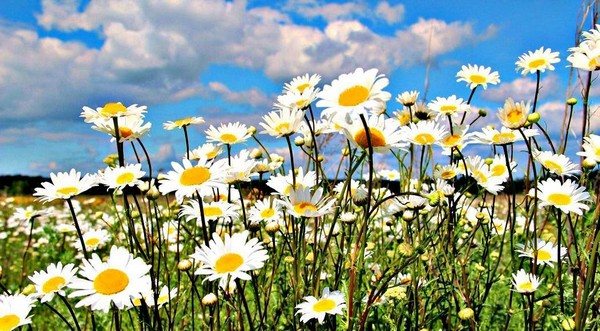

Chamomile has been appreciated by people for a long time.
It was to her and her properties that doctors began to pay as much attention as possible in the Middle Ages. In Russia, this plant was also known to doctors. In treatises dating from the 17th century, it is often mentioned as an ingredient in various drugs.
The benefits of chamomile preparations for diseases of the digestive tract
In addition to the ability to weaken inflammation, chamomile is useful for various dyspeptic disorders in that it normalizes the functioning of intestinal smooth muscles. In case of spasms, it promotes relaxation, but in case of violations of contractions, on the contrary, it stimulates activity and the evacuation of contents.
Partly for these reasons, chamomile preparations are often used to treat constipation, colic, intestinal muscle spasms, and flatulence. At the same time, its use is not always shown: with nausea and vomiting, such drugs can intensify attacks, as well as they can lead to an exacerbation of diarrhea.
On a note
The danger of using chamomile increases if you drink it on an empty stomach - in this case, the likelihood of developing nausea increases.
Contraindications for use
It is forbidden to take decoctions orally during the period of bearing a child. Any decoctions from this herb contribute to the production of large amounts of estrogen. This hormone in excess is very dangerous during pregnancy, and can lead to premature birth or termination.
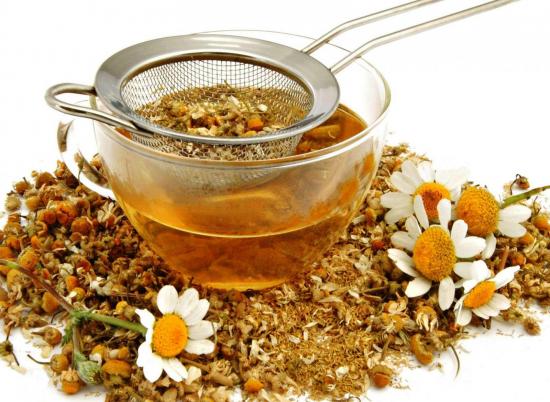

Any preparations that include the plant should be used with caution by people with vision problems. Admission is allowed after consultation with an ophthalmologist.
It is contraindicated to drink chamomile in case of individual intolerance or allergies, but this happens extremely rarely.
The constant use of decoctions and teas can lead to migraine attacks and recurrent headaches, cause vomiting. It is recommended to take any herb no longer than ten days, then take a break.
Homemade linseed oil remedies
For the treatment of a cold, traditional medicine offers the following recipe: mix 50 ml of flaxseed oil and 7 ml of garlic juice. Apply the agent to the nasal mucosa several times a day.
An ointment made from linseed and sea buckthorn oils (200 ml and 100 ml) will help heal wounds and burns. To do this, moisten a napkin in oil, put it on the affected skin and bandage it. Leave on for 6 hours.
You can get rid of age spots and freckles using this tool: combine 10 ml of flax oil, 1 g of borax, 25 ml of lanolin and 50 ml of water. Beat the mixture with a mixer and apply as a mask on the face twice a week for one month.
Or pharmacy - an annual herb.
The root is thin, the stem is straight or recumbent, 20-50 cm high, most often branched. The leaves are alternate, double- or triple-pinnate. The flowers are collected in small baskets on long legs, forming umbrella-shaped clusters on the tops of the stems. The marginal flowers of the basket are ligulate, white, the median ones are tubular, yellow. Blooms in May-September. An odorous plant.
Where does chamomile grow?
Pharmacy chamomile is one of the most famous medicinal plants. It grows in fields, vegetable gardens, near dwellings, on roadsides. They are very similar to her: field navel (Anthemis arvensis), odorless chamomile (Matricaria inodora) and tongueless chamomile (Matricaria discoidea).
How to recognize chamomile officinalis
Many, very different species are united under one name. And chamomile medicinal has healing properties. Its other name is pharmacy, the third, quite official, is stripped, and the fourth is field.
What does a pharmacy chamomile look like? Compared to ornamental sisters, it looks unpresentable: a low plant with pinnately dissected, sometimes twice or even three times, threadlike leaves.
Long peduncles end in small flower baskets framed with white petals; the sun center consists of modified yellow flowers.
The receptacle is often conical. And always hollow - this is one of the main signs by which you can distinguish healing chamomile from just chamomile. And the apple smell also gives it away. The root also has medicinal properties, which in some cases are even stronger than those of flowers.
You will learn all the details about how to distinguish a pharmacy chamomile from the video:
Pharmacy chamomile and green chamomile - medicinal properties
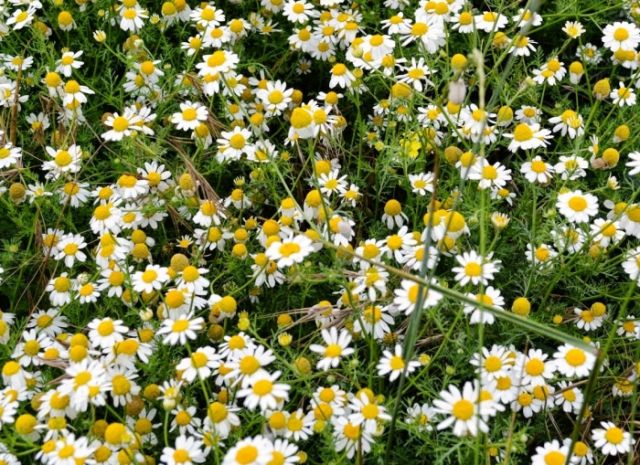

In summer, our eyes are delighted with elegant field plants with large flowers that resemble a miniature sunflower, but not with yellow, but with white petals. People who are not experienced in botany, and often who know it well, habitually call this plant chamomile, although in the botanical nomenclature a different name is assigned to it - the common daisy, or the clergyman (Leucanthemum vulgare Lam). But real daisies usually slip out of sight of lovers of wildflowers, since in beauty they are much inferior to the magnificent nivyannik.
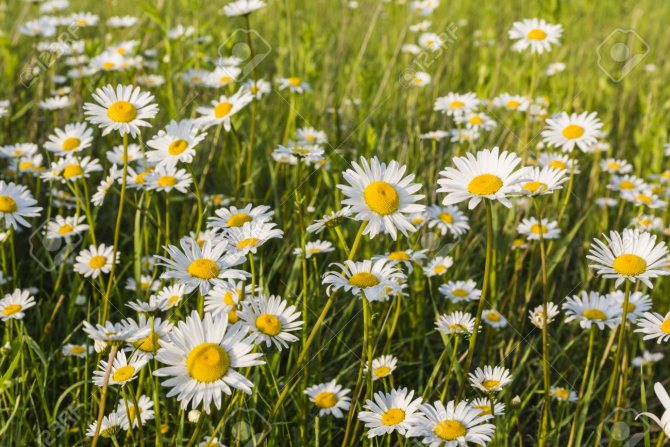

Nivyannik (Leucanthemum vulgare Lam)
One of the types of chamomile - pharmaceutical chamomile, or medicinal, is used in modern medicine. It is distinguished from non-medicinal species of chamomile by a very pleasant smell, vaguely reminiscent of the smell of ripe apples just picked from the tree. No wonder the ancient Romans called the pharmacy chamomile "chamamellon", composing this name from two words: "chamai", which means low, and "mellon" - an apple. Chamomile as a medicinal plant was very popular in the ancient world.
Chamomile was no less famous among doctors of the Middle Ages. In the 18th and 19th centuries, the glory of chamomile faded more and more. At the beginning of this century, it was mainly used in folk medicine, where it firmly held its position, and was also consumed in large quantities as a cosmetic product.
Chamomile teas are known to give blonde hair a golden hue.It is also believed that the skin, if washed with a decoction of chamomile inflorescences, acquires special tenderness and velvety.
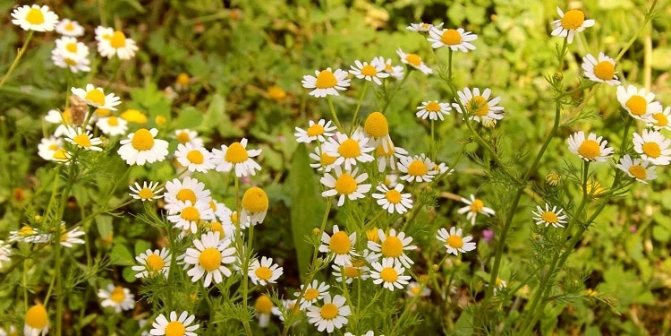

pharmaceutical camomile
In pre-revolutionary times, before getting to the pharmacy, chamomile flowers traveled a long way. Here is what the well-known expert on medicinal plants MV Rytov wrote about this in his book "Russian medicinal plants": "Most of the consumed chamomile is collected wild, bought by commission agents and exported to Germany, from where it is imported into Russia in German packaging and sold in a pharmacy. at a high price. "
Pharmacy chamomile is a low herb with a branched, twisting stem and leaves dissected into narrow linear slices.
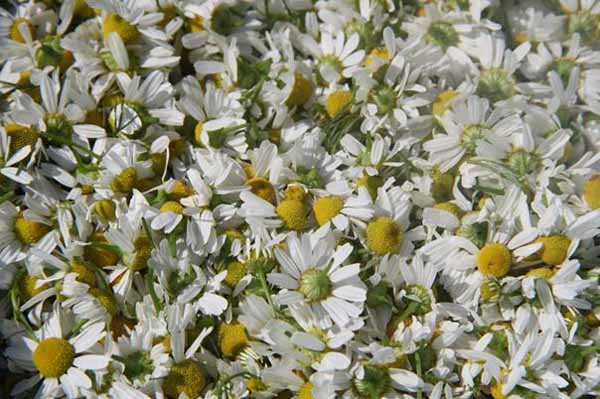

pharmaceutical camomile
Pharmacy chamomile can be found along the roadsides, in the fields among crops or on the borderlines almost throughout Russia. To the north, it reaches the 60th parallel, but it grows especially abundantly in the southern regions of Ukraine and Moldova. With the plowing of virgin and fallow lands, many thickets of pharmaceutical chamomile were destroyed. Chamomile had to be urgently introduced into the culture. Now it is grown in Ukraine, Belarus and Siberia.
The pleasant smell of chamomile flowers is due to the presence of essential oil (about 0.5%) in them. Chamomile essential oil of a beautiful deep blue color. This color is due to the presence of chamazulene terpene in the oil, which has a pharmacological effect.
When the essential oil is stored, its color changes, it turns green and then brown. It is oxidized by atmospheric oxygen chamazulene. In addition to chamazulene, chamomile flowers contain two more substances: prochamazulene and matricin. These substances under certain conditions, for example, at elevated temperatures, are converted into chamazulene.
All three substances have anti-inflammatory, sedative (calming the nervous nervous system) and local anesthetic (analgesic) effects. In addition to the three listed substances, chamomile essential oil contains another very valuable component - glycoside apiin. This substance relaxes smooth muscles and, as a result, relieves spasms, including intestinal spasms.
The choleretic effect of decoctions of chamomile inflorescences has also been experimentally tested and proven.
Recently, in connection with a deeper study of the chemistry and pharmacology of the active substances of chamomile inflorescences, the attitude of doctors towards it is gradually changing, and again the prescription of Flores chamomillae is increasingly found in doctors' prescriptions.
Chamomile has a counterpart in North America. The sibling plant has the same scent, very similar leaves and stems. Only the inflorescences differ in that they do not have white marginal ligulate flowers, as if someone's invisible hand had cut them off in the process of a famous fortune-telling. This type of chamomile is called: tongueless chamomile, or odorous chamomile (Matricaria matricarioides Porter).
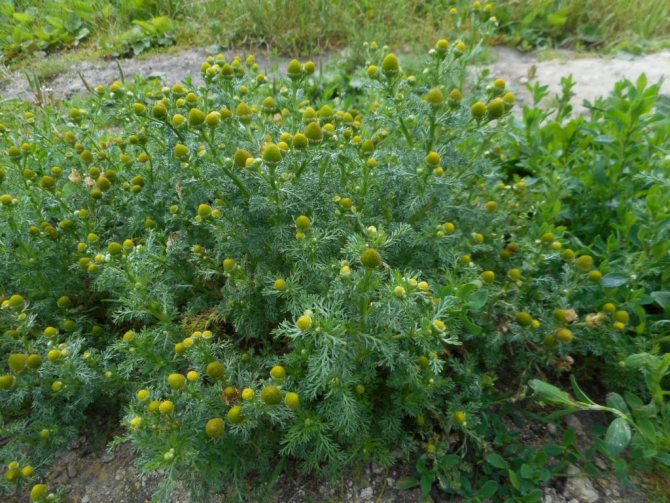

Chamomile green (tongueless) - Matricaria discoidea. dc. (Matricaria matricarioides Porter)
Until the middle of the last century, there was not a single tongueless chamomile plant on the continent of Eurasia, now it can be found everywhere. The tongueless chamomile attacked our continent from two sides: from the Atlantic and Pacific coasts. In 1850, the first specimens of tongueless chamomile were found in Sweden, around the same time this type of chamomile was discovered in Kamchatka. Thirty years later, she reached St. Petersburg, in 1886, the first copies of it were collected near Moscow, and in 1898, tongueless chamomile appeared in the vicinity of Nizhny Novgorod, it is not known, from the west or from the east.
The new plant began to be found in abundance everywhere along the roads, along the banks of rivers and streams, and the village streets were especially fond of him.
Procurers, making sure that the new chamomile has the same smell as the pharmacy, spontaneously began to collect it along with the pharmacy chamomile, and some doctors only recognized the new type of chamomile as medicinal.In the end, both species were recognized as equivalent and introduced into the pharmacopoeia.
Studies of recent years have established that in the inflorescences of tongueless chamomile there is no one of the main active substances - chamazulene, therefore the inflorescences of chamomile and tongueless chamomile cannot be considered identical. In the current pharmacopoeia (tenth edition), tongueless chamomile inflorescences are allowed only for external use.
Inside, chamomile infusions are usually taken for spastic and inflammatory conditions of the gastrointestinal tract and as a diaphoretic for colds. Such infusions are prepared in a cold way. They are prepared as follows: 10 teaspoons of dried inflorescences are poured with 2 cups of cold water and insisted for 8 hours. This amount is drunk in 1-2 days.
For external use: with furunculosis, fluxes - infusions are prepared in a hot way. 2-3 tablespoons of inflorescences are poured with boiling water and insisted for an hour in a sealed container.
V. Salo Science and Life
Pharmacy chamomile - Matricaria chamomilla l.
Description.
Pharmacy chamomile is an annual herb 10-40 cm high, with an erect, branched, grooved stem. Leaves double-, triple-pinnate with filamentous lobes, sessile. Inflorescences are apical baskets with long pedicels. Marginal ligulate flowers are white with three denticles at the end. Inner flowers are tubular, yellow, bisexual, very small. The inflorescence bed is strongly convex, conical, hollow inside (empty). The fruit is an oblong brown achene. Blooms in May - August.
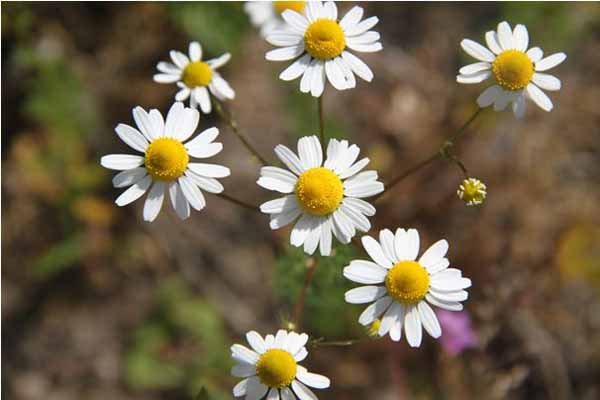

pharmaceutical camomile
Spread.
Grows in vegetable gardens, on roads, in gardens, near dwellings, prefers light soils (sands and sandy loam). It is rare in all areas of the Center. Other types of chamomile that are not medicinal are widespread. The main difference: a dense or flat bed of an inflorescence and an unpleasant odor, which is sharply different from chamomile.
Blank.
The best time for collecting flower baskets is only when the reed white flowers are horizontal. Tear off the entire basket with the remainder of the peduncle no more than 1 cm. It is necessary to dry the chamomile immediately, usually it is dried in the attic on stretched panels, weaving, laid out in a thin layer. Store in tightly closed jars.
The finished raw material (GOST 2237-75) consists of whole or partially crumbling flower baskets of hemispherical or conical shape, without peduncles or with their remains no longer than 3 cm. The size of the basket without tongues is 4-8 mm. The reed is white, the tubular is yellow. The smell is strong, aromatic, the taste is spicy, bitter.
Chemical composition.
Chamomile flowers used in medicine contain an essential oil, the main component of which is chamazulene, a bitter substance, flavan glycoside apiin, choline, phytosteratin, resinous substances and glycosides of antispasmodic and diaphoretic action.
Application.
Pharmacy chamomile is a popular medicinal plant, a shining example of how an old traditional medicine, after pharmacological and clinical studies, was transferred to scientific medicine. The chamazulene contained in it determines its value as an anti-inflammatory, antispasmodic and carminative agent.
Pharmacy chamomile is one of the best remedies for the treatment of acute and chronic inflammation of the gastric mucosa (stomach ulcers). It should be noted that the effect of using chamomile is observed only with prolonged, consistent use of it for 2-3 months.
The anti-inflammatory effect of chamomile is also used for many other diseases: colitis, inflammation caused by chronic constipation associated with colic, etc. It is also recommended for hyperexcitability, neuralgic and toothache, diarrhea, painful menstruation, uterine bleeding, convulsions and as diaphoretic.
Externally used for washing the mucous membrane with hemorrhoids and eye inflammation; in the form of an infusion for compresses it is used for edema, boils, wounds, weeping and difficult to heal skin rashes, for foot baths and sweating of the feet.
For toothaches, rinse your mouth with brewed chamomile. In case of influenza, it is recommended to inhale vapors of hot chamomile infusion. Chamomile is used to maintain the freshness of the skin, to wash the hair, to give it a beautiful shade. In all cases, chamomile is used as a cold or hot infusion.
Preparation of cold infusion: 10 teaspoons of flowers are poured with two glasses of cold water, insisted for 8 hours (dose for 1 - 2 days). Small children are given a dose appropriate for their age. Preparation of hot infusion for external use for washes, compresses, baths, etc.: 2-3 tablespoons of flowers are poured with boiling water and insisted for an hour in a well-sealed container.
Chamomile flowers are also part of the choleretic and emollient collections. MA Nosal describes the use of a napara from chamomile flowers mixed with table salt (200 g per 10 l of water) in the form of baths for gouty swellings of the hands and feet. He also recommends a compress from a mixture of elderberry and chamomile flowers for gout and rheumatic inflammations. This is done this way: a mixture of flowers is moistened with boiling water, then heated strongly in a saucepan and bags are filled with this mixture, which are applied to the sore spot and tied. The same method is used for toothache with swelling of the cheeks, pains in the cheeks and head after a cold, fluxes are warmed. The same compresses are used for "lumbago" (back pain).
Very often chamomile is used in homeopathy in the form of fresh flower juice mixed with alcohol. Chamomile is prescribed for pregnant women and children with indigestion and cramps, with pain in the stomach and liver, with diarrhea, bleeding, fever, nervous disorders, insomnia from tobacco, coffee, etc. 1st, 2nd, 3rd dilution 1-2 times or more a day. Externally, chamomile water is used for washing the eyes, washing the throat and for lotions.
In Poland, young women use chamomile for cosmetic purposes as follows:
- 4 times a week wash your face without wiping it after washing, in a strong steam of chamomile flowers;
- put gauze dipped in a mixture of raw yolk, honey, almond oil and a strong decoction of chamomile on the face. The mask gives the skin a beautiful matte appearance and makes it smooth.
Chamomile green - Matricaria discoidea. dc.
Description.
Green chamomile is an annual herb with a strong fragrant odor. Branched stems, up to 40 cm high, ascending or erect. Leaves are alternate sessile, double-, triple-pinnate, with linear lobes. They have greenish-yellow flower baskets without marginal reed flowers. The baskets at the top sit on short, thickened legs. The stem and leaves are bare. Blooms in June - August.
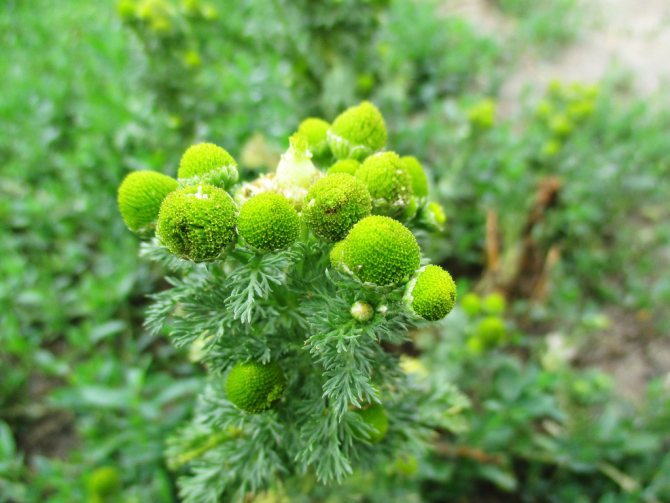

Chamomile green (tongueless) - Matricaria discoidea. dc. (Matricaria matricarioides Porter)
Spread.
It grows near roads, in kitchen gardens, in wastelands, near dwellings, etc. This type of chamomile was brought into our country from North America and has spread widely, in some places it has replaced the pharmacy chamomile. In the last century, it was bred as a rarity in the St. Petersburg Botanical Garden.
Blank.
Collect flower baskets of fragrant chamomile during flowering, plucking at the very base so as not to capture the leaves. The remainder of the peduncle should be no longer than 1 cm. Dried in attics, in well-ventilated rooms, spreading out in a thin layer. The raw material (GOST 2237—75) consists of whole flower baskets of a rounded-conical shape without peduncles or with their remains no longer than 1 cm and a diameter of 3—6 mm. The color of tubular flowers is yellowish-green, the wrapper is grayish-green. The smell is strong, aromatic, the taste is spicy, bitter.
Store in tightly closed jars.
Chemical composition and application.
Until now, flower baskets of fragrant chamomile are used for the same purposes as pharmaceutical chamomile.
N.N.Brezgin Medicinal plants of the Volga region
About the past of chamomile
Flowers that look like daisies
Chamomile has accumulated many interesting legends and facts over its history:
- In ancient times, it was believed that this flower is capable of extinguishing conflicts and reconciling warring parties, helping good to defeat evil.
- It was customary to place a bouquet of these unpretentious plants next to the patient's bed. The ancient physician Avicenna gave a description of chamomile in his work "The Canon of Medicine".
- The ancient Egyptians considered chamomile to be a divine flower, embodying the power and energy of the god Ra, capable of awakening this divine power and helping a person in trouble.
- Tibetan monks make the elixir of youth from chamomile. And some African tribes, deciding that chamomile attracts evil spirits, completely destroyed and wiped out several species of this plant.
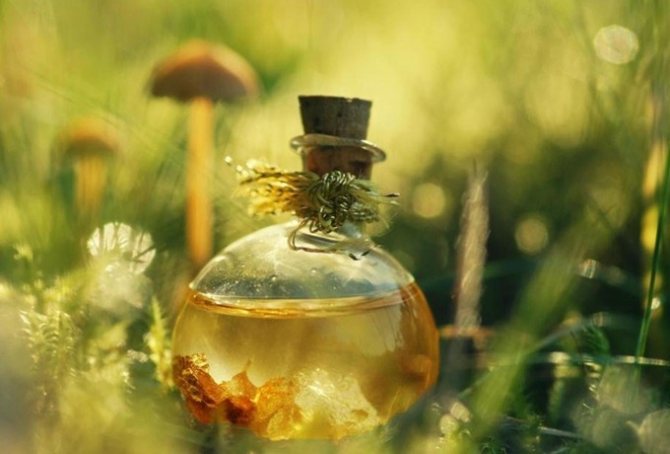

Chamomile elixir
- Previously, women used a strong infusion of chamomile to dye their blonde hair, this gave them a beautiful golden hue.
Contraindications and harm
There are not so many contraindications for chamomile - it is a very mild plant in its action, and it does not contain aggressive substances. However, if you are allergic to this particular flower and remedies from it, then chamomile will have to be abandoned.
Chamomile is also not recommended for pancreatitis, as it can provoke its exacerbation.
You should carefully take this plant in the late stages of pregnancy and exclude it while breastfeeding your baby.
Too frequent intake of chamomile or exceeding the dose of the drug causes such undesirable symptoms:
- nausea;
- headache;
- high blood pressure.
Description of the flower
Chamomile (in Latin "Matricária") belongs to the family of Asteraceae, or Compositae. It can be either an annual or a perennial, depending on the variety. So, for example, tongueless or medicinal is an annual, garden species of daisies, such as Snow Maiden or Felicia, will delight the eye for more than one summer.
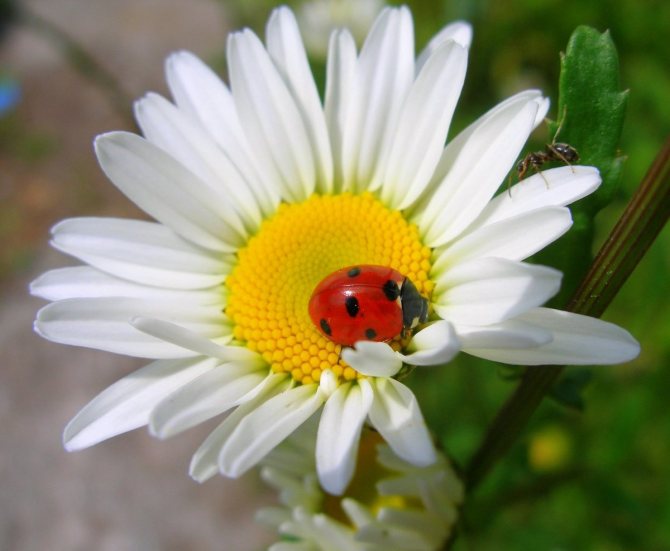

Everyone knows beautiful daisies
Note! There is no specific answer to the question of how many petals a chamomile has. Each flower is individual and can have from 10 to 34 petals.
These flowers are double, semi-double, with thin, wide, straight, curved petals, and without them at all, of different sizes and shades. Some will have a pronounced fragrant aroma, while others will be barely noticeable.
Where do daisies grow?
Chamomiles have very small seeds that are easily blown by the wind over long distances, so glades or free-standing bushes of these flowers can be seen almost anywhere in the world. Unpretentiousness and the ability to adapt to any conditions play a key role in the ubiquity of these plants.
These flowers can be found throughout the Eurasian continent, Australia, southern Africa and America. Wild daisies are frequent companions of road shoulders, bright sunny meadows and foothills. In addition, representatives of the Astrovs have long fascinated gardeners with their beauty and ease of care.
When field daisies bloom
Chamomiles bloom during the entire warm period, from the second half of April to September. Most of the buds bloom in the summer period June - July. In places with a milder and warmer climate (Mediterranean, Crimea, Caucasus), chamomile begins to bloom in early spring (late February - early March) and continues until late autumn in October. With the advancement to the north, the inflorescences begin to appear closer to summer and fade much earlier.
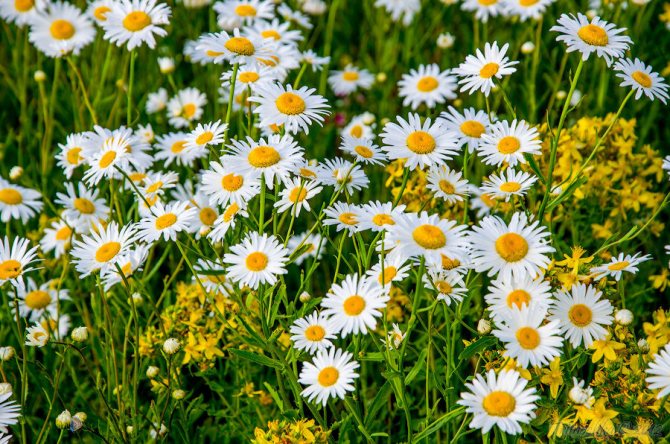

Field
For your information! Each bush releases new inflorescences during the warm months, which makes the flowering seem constant. Top dressing allows botanists to collect flowers 3-5 times from one bush.
The most popular is field chamomile, which has many beneficial properties.Based on the research of the science of pharmacognosy, it was found that the essential oil in its inflorescences has disinfecting and antiseptic properties that have a beneficial effect on the mucous membrane. Vitamins and minerals strengthen and nourish hair, which promotes hair growth, giving a healthy, silky appearance. In addition, the components of the chamomile collection help to treat colds and gastrointestinal diseases, relieve itching, redness and flaking on the skin.
One, chamomile, two, chamomile ... Subtleties of reproduction
Let's get acquainted with the most common methods of chamomile propagation.
By dividing the bush
It is better to outline the division of the bush in the spring. The bush is dug up and divided with a shovel.
Each part is planted in a separate hole, covered with earth and watered abundantly. After 2 days, the plant will gain strength and grow.
With this method, large flowers are formed in the plant by the end of summer.
Propagation by cuttings
This method is not for novice florists. Although it is not difficult in technology, the percentage of survival with it is extremely low.
Cuttings 10-12 cm long are cut from a chamomile bush until buds appear on it.
A pothole is made at the end of the cutting for faster rooting. Then it is placed in a container of water.
Within a week, small white roots should appear. The water is changed every 2 days.
There should be at least three roots of 3-4 cm each.
The stalk is planted in open ground.
Seed propagation
The germination rate with this method is high. Seeds are harvested in autumn from dry brown buds.
Stored all winter. They land in mid-May.
The seeds are planted in pots, which are covered with cellophane and placed in a sunny place.
When sprouts appear, the bag must be removed. The presence of 4-5 leaves will indicate the ability of the plant to transplant into the ground.
Do all chamomiles have inflorescences of this shape?
Among the typical daisies, there are several species (sometimes they are considered as subspecies), the inflorescence of which is devoid of marginal flowers. In fact, such inflorescences are just like a cone, seated with small tubular flowers.
For example, the photo below shows a green chamomile, or tongueless:
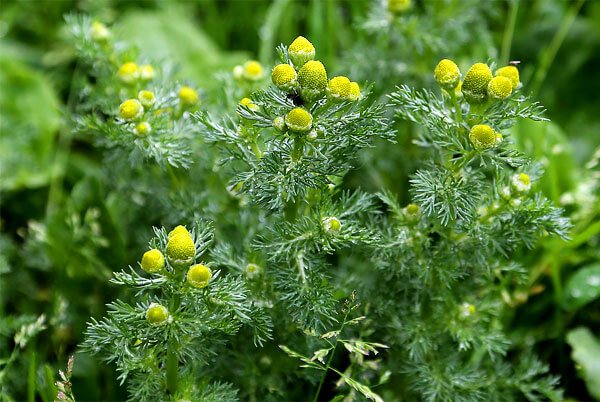

Its Latin name is Matricaria discoidea (Latin for "round"). The inflorescences of this species are similar to the inflorescences of chamomile, in which the “petals” seem to have been torn off. Moreover, such a plant is systematically closer to pharmaceutical chamomile than, for example, field chamomile or Roman chamomile, the flower baskets of which, at first glance, do not differ in any way from the classical ones. For example, green chamomile also has a cavity in its receptacle. This sign is more important than the presence or absence of reed flowers.
An interesting fact: precisely because the inflorescences of green chamomile are less noticeable and attractive, it "has to" smell much stronger in order to attract pollinating insects. Therefore, in fact, it got its telling name - fragrant chamomile, or fragrant.
From Hippocrates to the present day
Chamomile infusions were used by the legendary Hippocrates. Another pillar of ancient medicine, Avicenna used this plant to make preparations for headaches. In Russia, the first records about her date back to the time of Ivan the Terrible. Pharmacy chamomile, the medicinal properties of which have been confirmed by time, have not lost their value until now.
The uniqueness of the plant is explained by the content of chamazulene in it - a substance with a powerful anti-inflammatory effect.
It also helps to fight allergic reactions, stimulates regenerative processes in the body. But its chemical composition is much richer and has many other important substances.
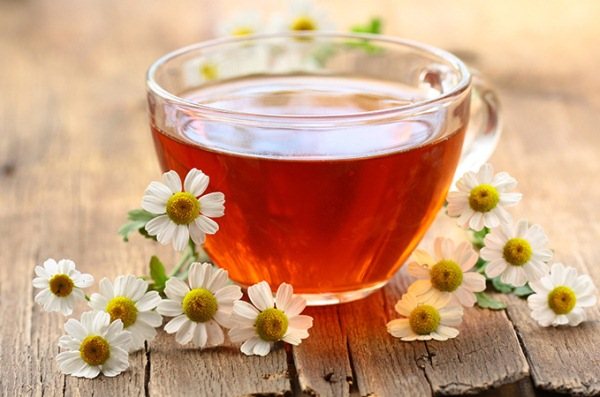

Chamomile contains many nutrients
There is:
- polyyne compounds - unsaturated hydrocarbons required for the synthesis of drugs;
- polysaccharides - the most important source of energy;
- plant sterols, restoring the work of the affected cells;
- a complex of salicylic, isovaleric, antemisic, caprylic acids, acting as a strong antimicrobial, antifungal agent, while having a calming effect;
- vitamins (C, PP; provitamin A);
- coumarins, having an antispasmodic, antitumor effect, reducing blood clotting;
- natural phenolic compounds, rich in tanning properties;
- proteins, bitterness, mucus and etc.
Coumarins are also found in the borage uterus. The chemical composition and unique properties of the boron uterus plant will help cure many diseases.
Popular talks
- Report-message Gold minerals 3, 4 class
Gold is a fairly noble and beautiful metal, yellow in color. It attracts many with its brilliance and grace. For us, ordinary people, we know gold for its beautiful jewelry. Many gold rings, chains and brooches - Report-message Long jump from the spot 2, 3, 5, 6 grade, in physical education
Standing jumps are usually offered only to warm up a little before a competition or before a test at school or at the institute. In some cases, a triple jump from a place is also used, but not everyone can perform it. - Report on the topic Calendar history grade 3 message
A long time ago, the calendar was used to count the days of the year, and it worked only due to the change in the movements of the heavenly bodies. Amazing, isn't it? But in each of the historical periods, different cultures perceived the rules differently,


